Bikepacking Morocco
Tips for planning
What to expect?
A very diverse and attractive destination. Desert, mountains, coast and in the northern part of the country even extensive forests. Lonely country roads, but also busy stretches.
But above all – and this is what makes the country so attractive for many touring cyclists – there are lots of beautiful trails. Partly sandy but mostly hard-packed gravel.
Additionally, interesting culture, incredibly hospitable people, good food and in general a cheap and easy to travel destination.
I spent 3.5 months in Morocco and here’s a map where you can follow the route I took. I did not visit any royal cities and avoided the tourist hotspots.
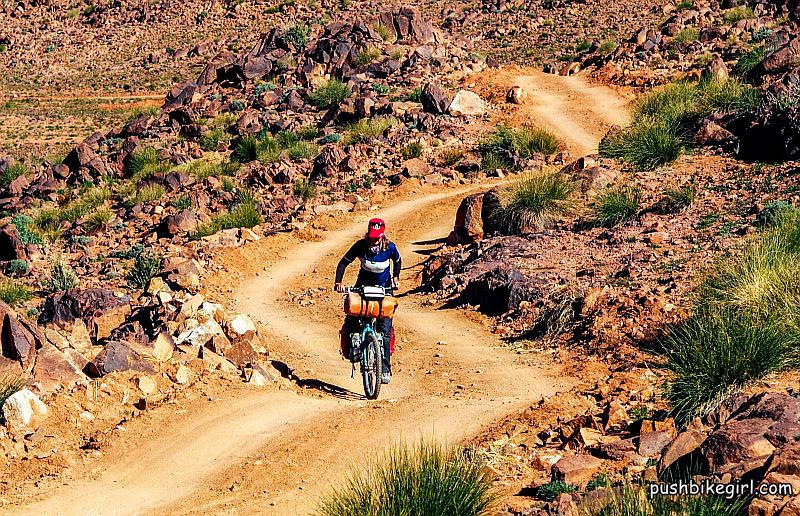
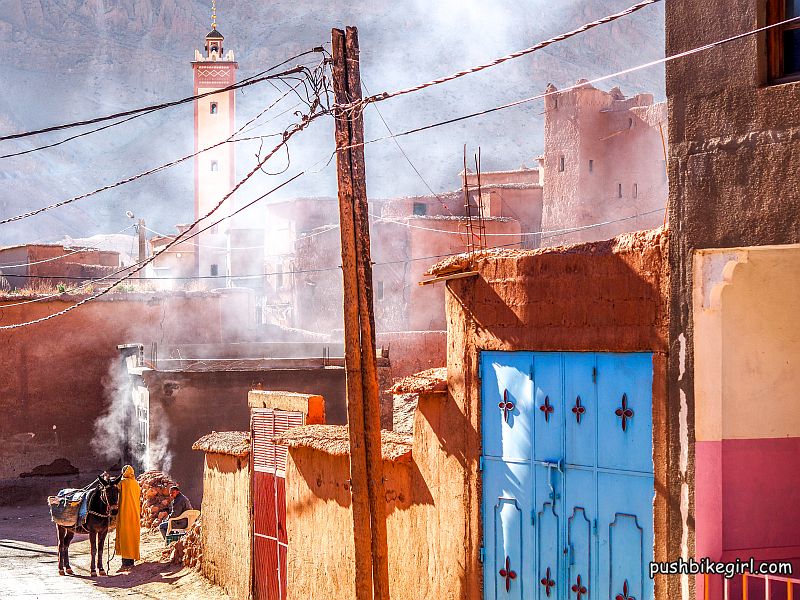
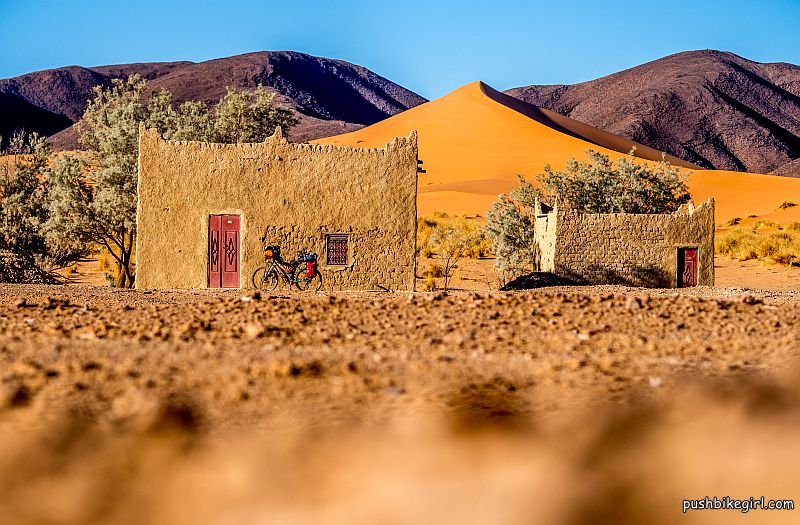
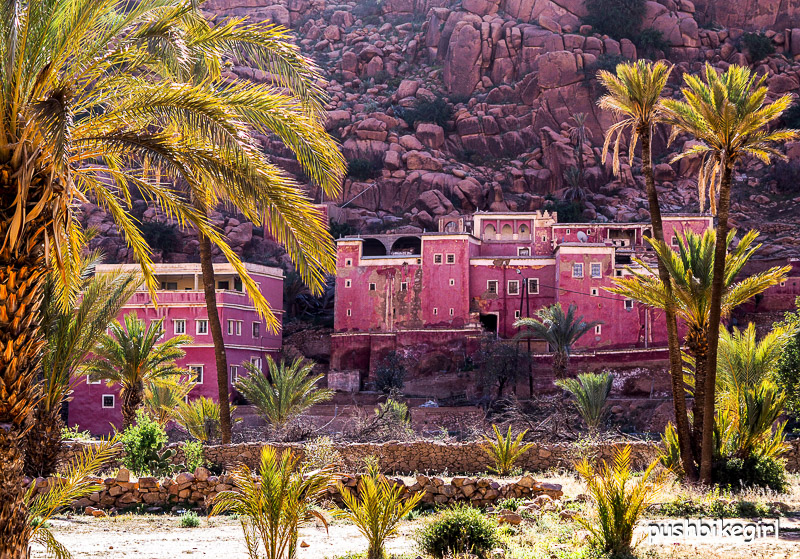
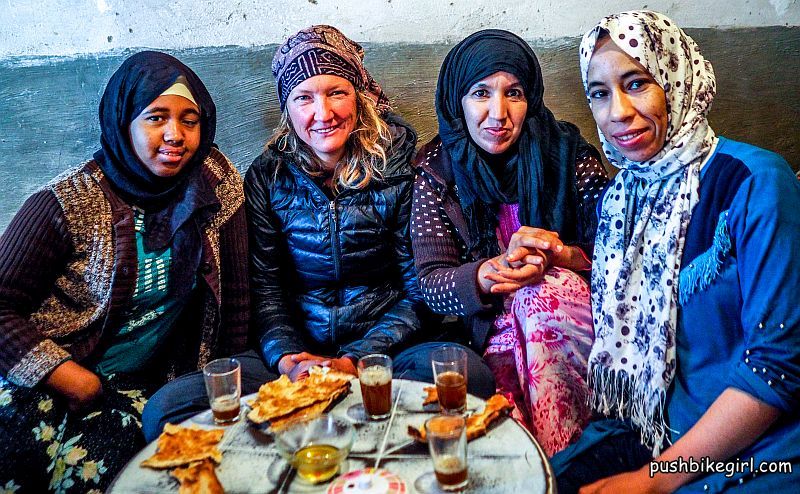
Equipment:
As always, less is clearly more. I can only advise everyone to take only the essentials with you, because it’s much more fun than being busy packing forever and just wanting to sleep at the end of a very hard day, because the unnecessary weight wears on your body.
Tires:
Schwalbe Mondial 26 x 2.15 folding tires are my choice for cycling as much of Africa as I can. If your journey is limited to Morocco and you want to be mainly on trails, I would choose a wider MTB tire.
I found the tarmac roads themselves almost always in very good condition. Also, the trails I rode rarely had really demanding sections, but of course with a wider tire on gravel your traction is much better.
Apart from that my Schwalbe Mondial was of course a bad choice in the sand, but otherwise as always with compromises they were absolutely okay.
The Mondial is designed for durability and puncture resistance and tries to score equally on both tarmac and gravel. I didn’t have a single puncture.
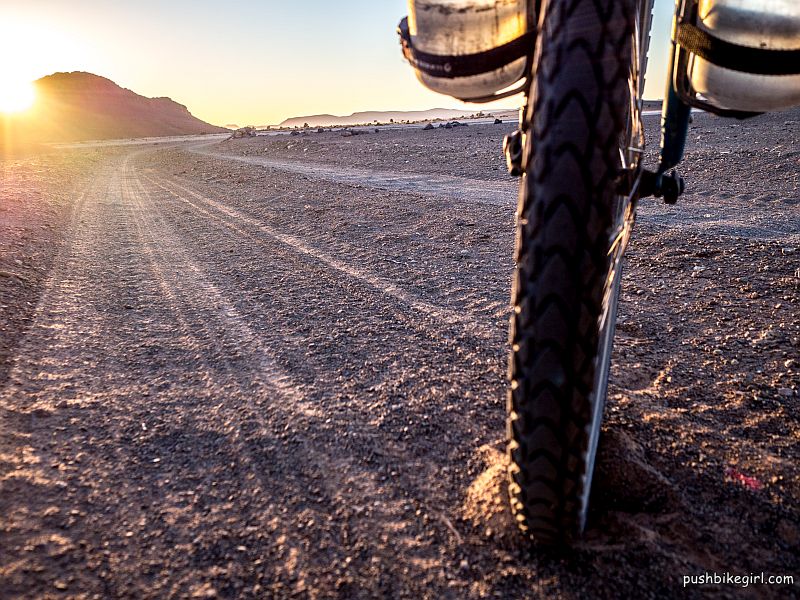
Tent, Clothing & Sleeping Bag:
According to the season. As always, opinions differ about tents and sleeping bags. But because Morocco offers a great infrastructure, traveling there is very easy.
So, I wouldn’t think long about which tent to pack – just take what you have in your basement – if it rains or snows, you’ll find shelter inside somewhere.
Camping wild:
In the less populated areas absolutely no problem.
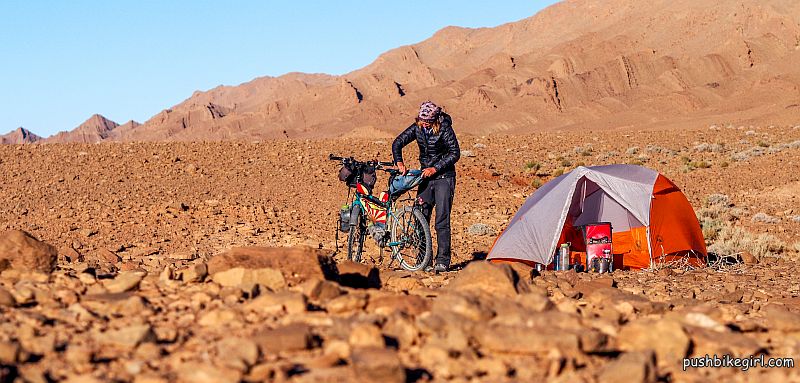
Hostels & Gites & Auberges:
You could theoretically start a bike trip in Morocco without a tent. There are always small hostels within a day’s reach, so-called Auberges or Gites for about 10-15 Euros including. half board.
Of course, you would miss the great stars at night and that would be a pity.
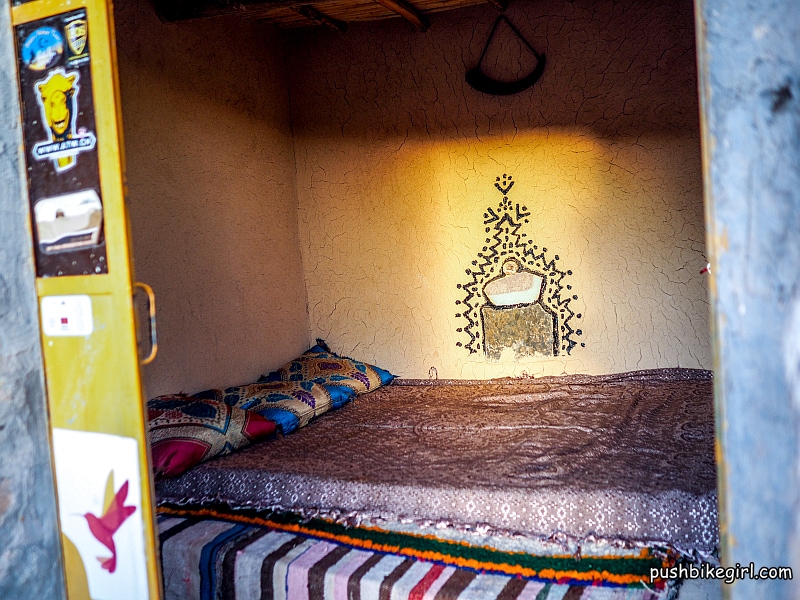
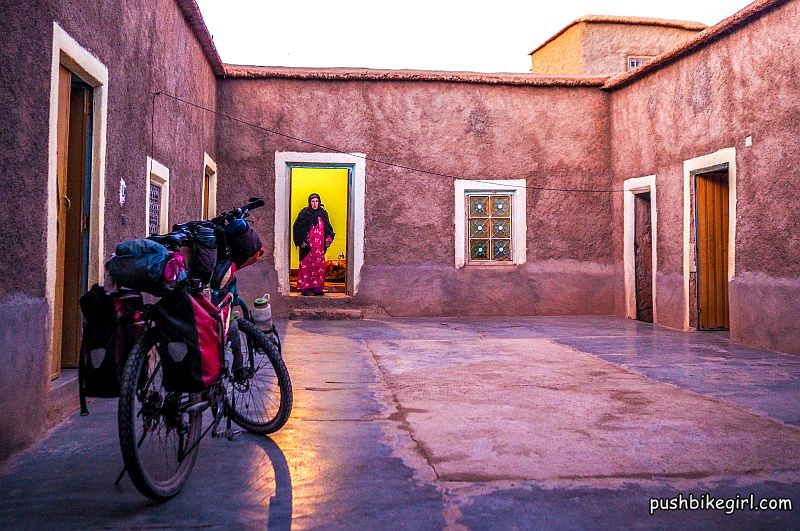
There are blankets provided in such hostels, but they are often heavy and old, so a sleeping bag – at least in winter – is really advisable to have. There is no heating in winter. In the mountains it is really cold – even inside houses. An Auberge can be an experience – at least for one night – I can recommend it to anyone.
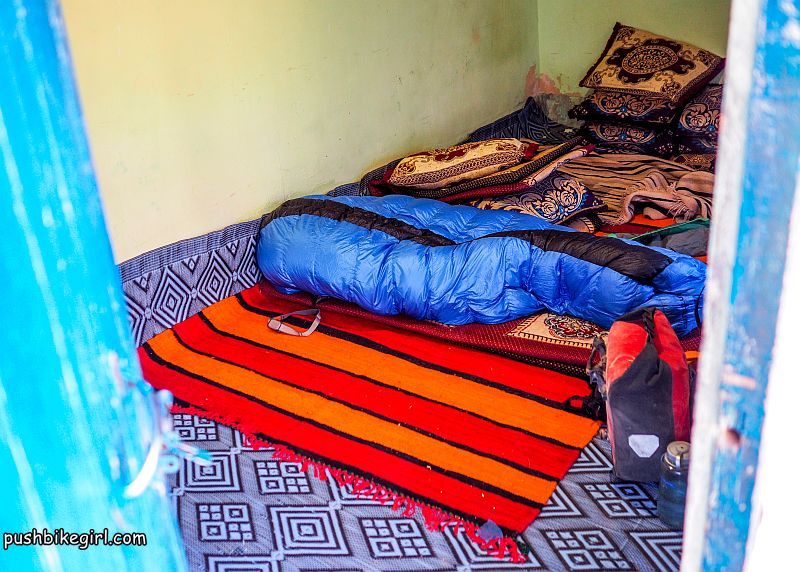
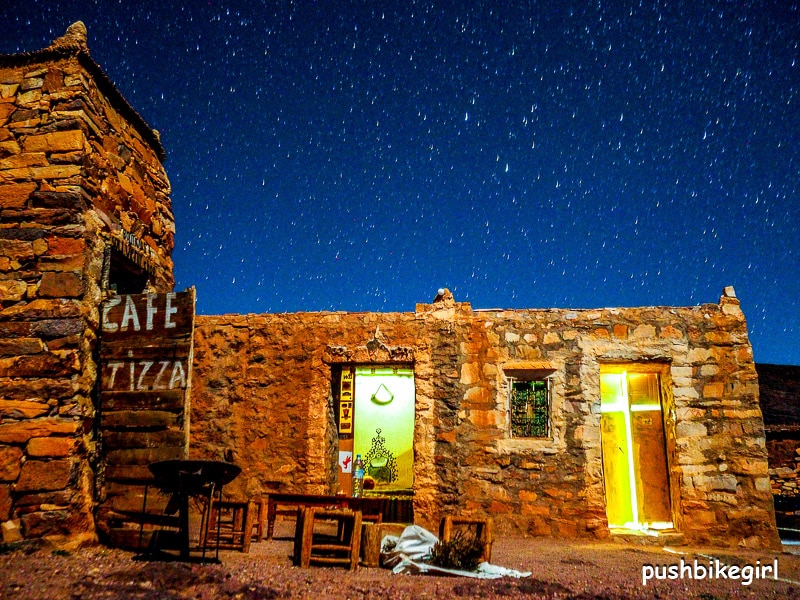
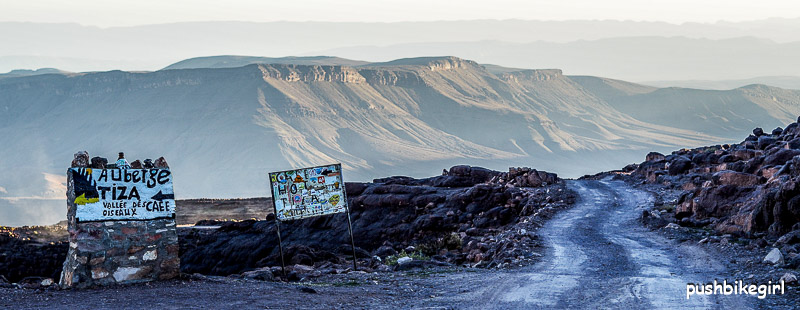
Campsites:
If you are not a fan of wild camping, campgrounds are also a possibility. And can be found around tourist spots and more populated areas.
I didn’t use them often, if so then I paid less than 5 Euro. Additionally, if you are not feeling like camping wild there is the possibility to camp at Auberges for a small fee.
Invitations:
I was invited very often, to spend the night with a family. Sharing a bedroom is not everyone’s way of traveling. I, on the other hand, always love the contact with the locals very much.
A warm meal and cuddled up in a blanket sitting together at the fire, drinking tea, are things I don’t like to miss, especially when it’s cold and wet outside.
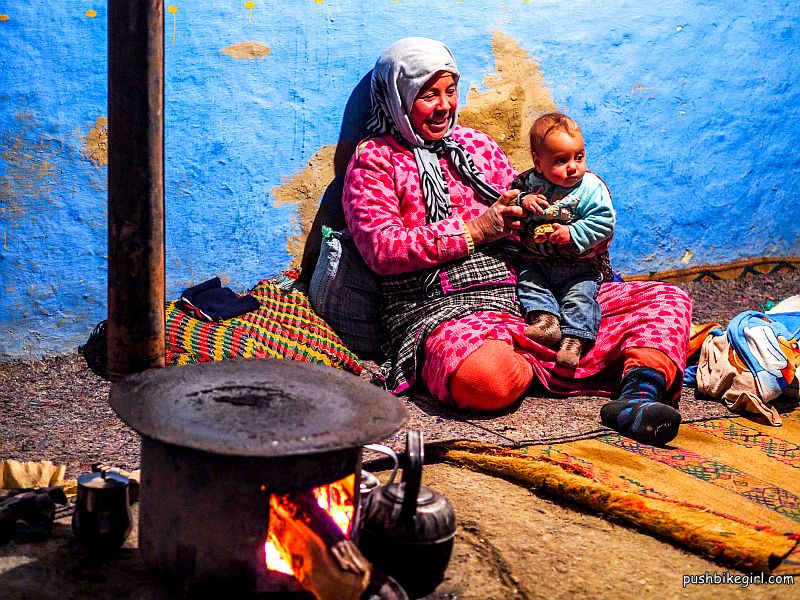
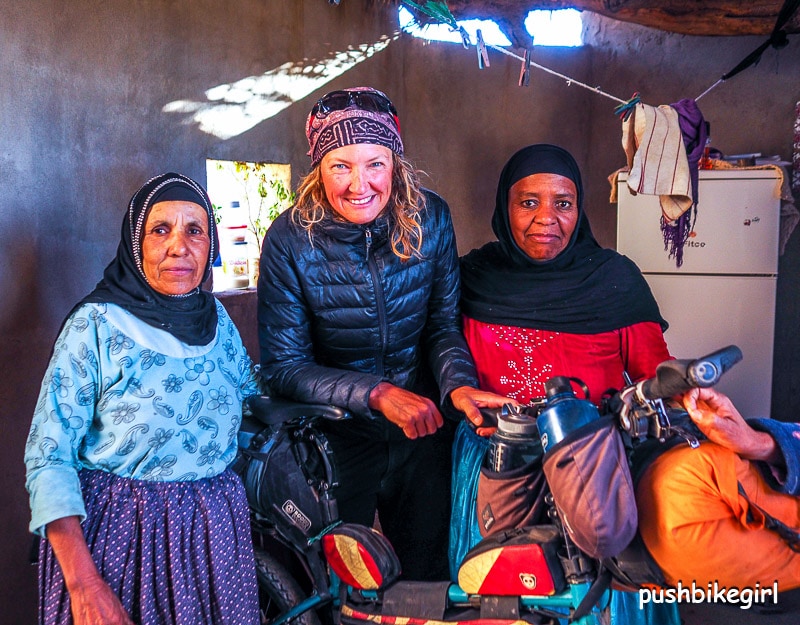
Language:
In the north of Morocco, you get along quite well with Spanish. Otherwise French. Some people, especially in the tourist areas, also speak English. Western Sahara is then again rather Spanish.
I don’t speak French myself and my Spanish is at beginner level. I didn’t have any problems at all, somehow you can always communicate.
Best season:
I was in the Middle Atlas and partly High Atlas Mountains in winter and it was often below 0 degrees Celsius at night. During the day it was sunny and warm up to 15 degrees. In the north the weather can be quite rainy.
The desert nights were never really cold and always dry. I would say the best months are autumn and late spring if you want to go to the mountains. Winter is a perfect time for the desert areas.
Before Christmas the country was almost deserted as far as tourists were concerned. From Christmas on it got a little more busy – on the routes I chose to ride it wasn’t a big thing.
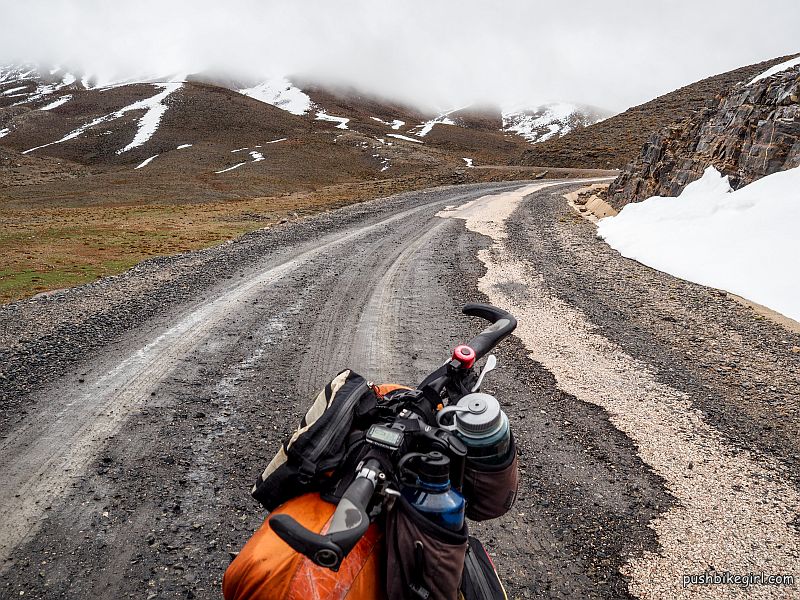
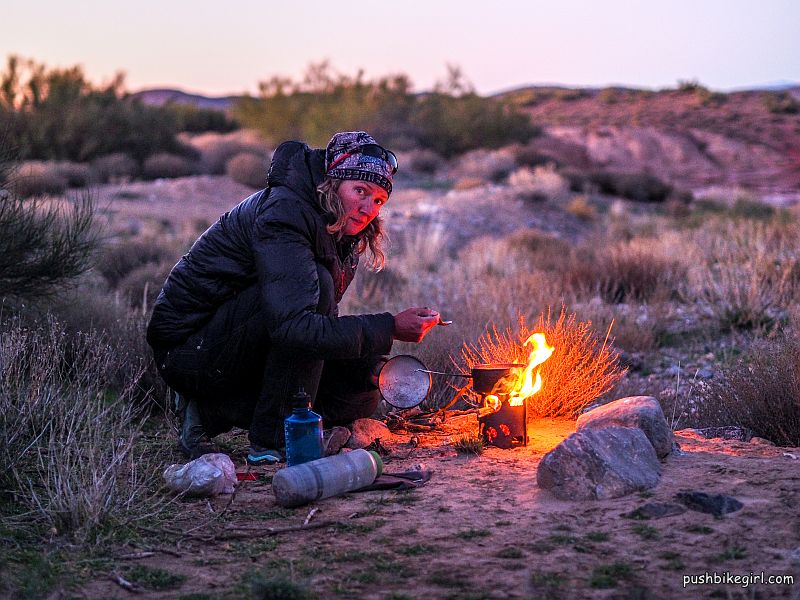
Wind:
Except in the Western Sahara I couldn’t find any prevailing wind direction. Most days there was little to no wind.
Water:
As already mentioned, the infrastructure is very good. There are often enough small settlements or houses, nomads or even hotels in the middle of the supposedly remote desert or mountain areas.
Don’t get me wrong, remote and secluded of course means something different for everyone, but my expectations to find a really remote area have disappointed me a little bit, because all the routes I cycled were not especially lonely.

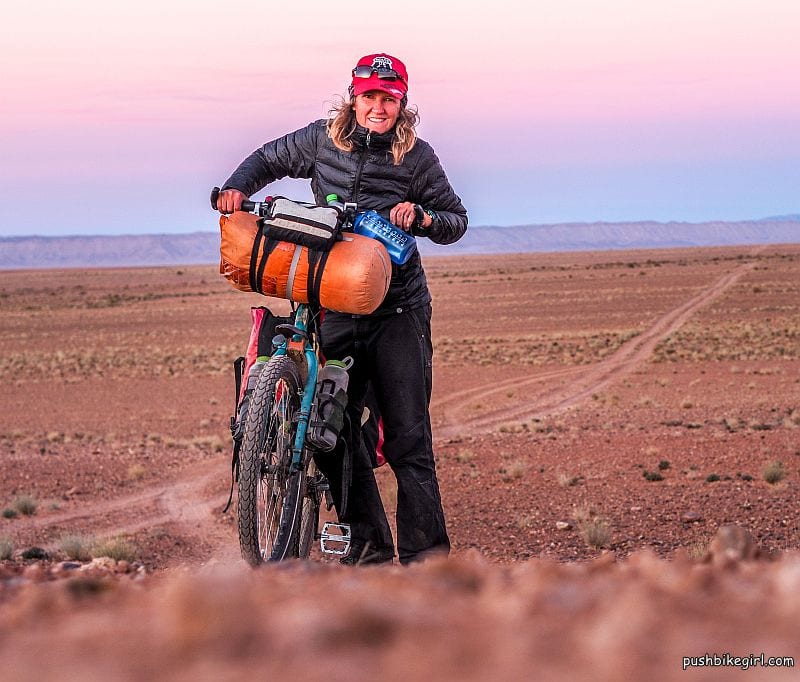
I can carry 6.5 L without any further problems – plus 3 L extra in a water bladder, which I stuff into my framebag if necessary. I never ran short and only once did I really carry more than 6.5 L.
But I traveled in winter – summer time is of course something completely different! Nevertheless, I met enough people again and again – and where there are people there is also water.
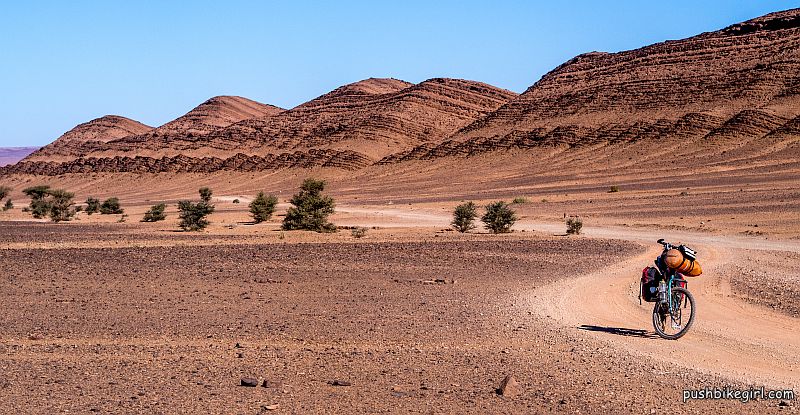
I initially treated the water, no matter from which source, with a Steripen, which I can charge via USB, but in the end, I drank all the water I was offered, without treating it and did not get sick.
Partly there are public wells, nomads have their supplies in large water canisters, otherwise tap water.
I use Nalgene bottles, which I can refill again and again and I am now asking everyone not to buy water in plastic bottles. Unfortunately, we already have enough garbage problems in the world – Morocco is no exception.
Food:
There is a good selection of food. Not necessarily along the tiny trails throughout the desert, but there are often enough settlements where people bake bread and are using Moroccan olive oil to dip, probably the world’s best.
You can always find staple foods. Oranges and mandarins can also be found in remote areas – here again in winter.
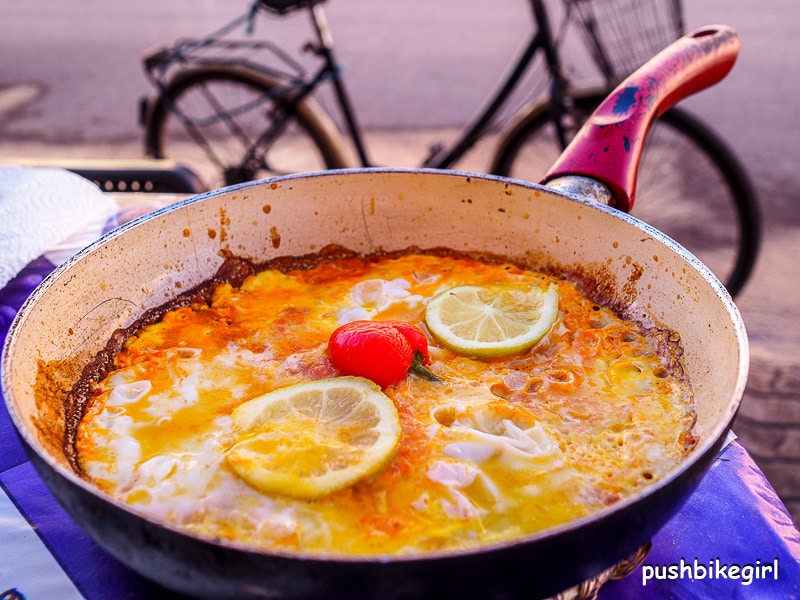
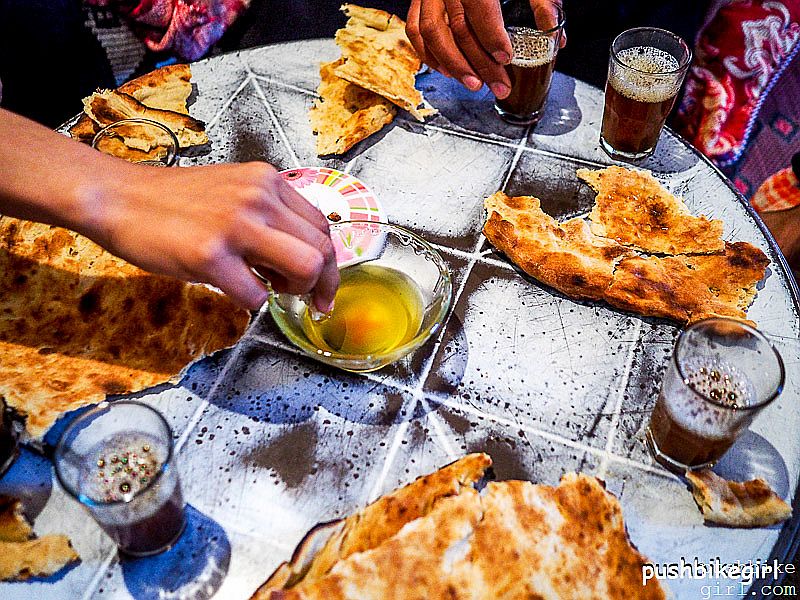
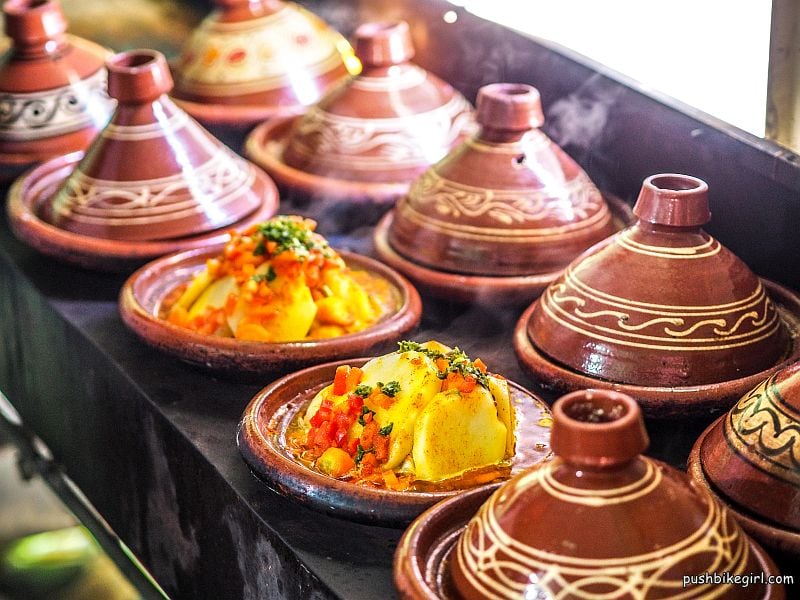
In the populated areas the food in a small pub is sometimes cheaper than cooking yourself. Always tasty and satisfying.
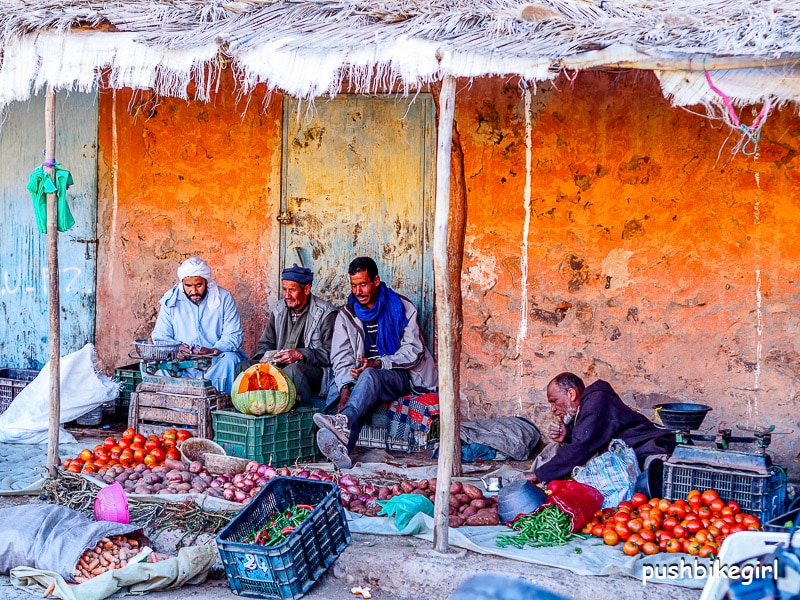
The range of goods is sufficient. Oat flakes, lentils, rice and noodles, vegetables, dates and nuts. Fruit. Fish cans.
Standard food is tajine or couscous, chicken and fries. Delicious lentil soup. Berber omelet. Baguette and cakes in the patisserie.
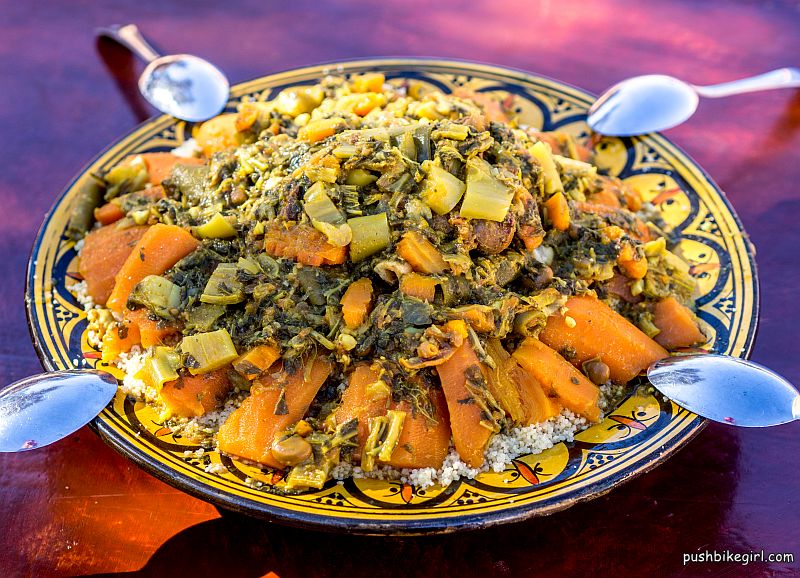
Stove:
I got along wonderfully with my Hobo stove. There was always enough wood.
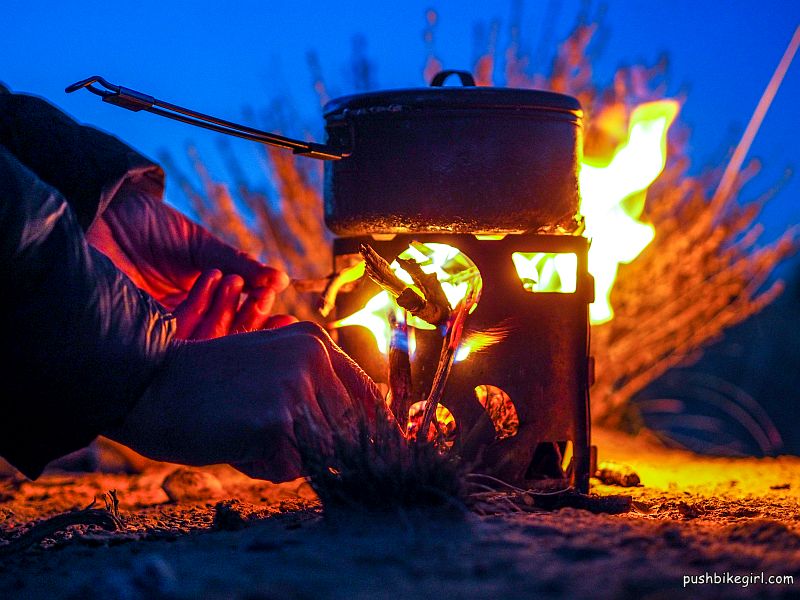
Toilets & washing facilities:
Toilet paper can be bought. There are always toilets in the restaurants. The hygienic conditions in homes were, good to sufficient. Water for washing was no problem except when camping in the wild, but often cold.
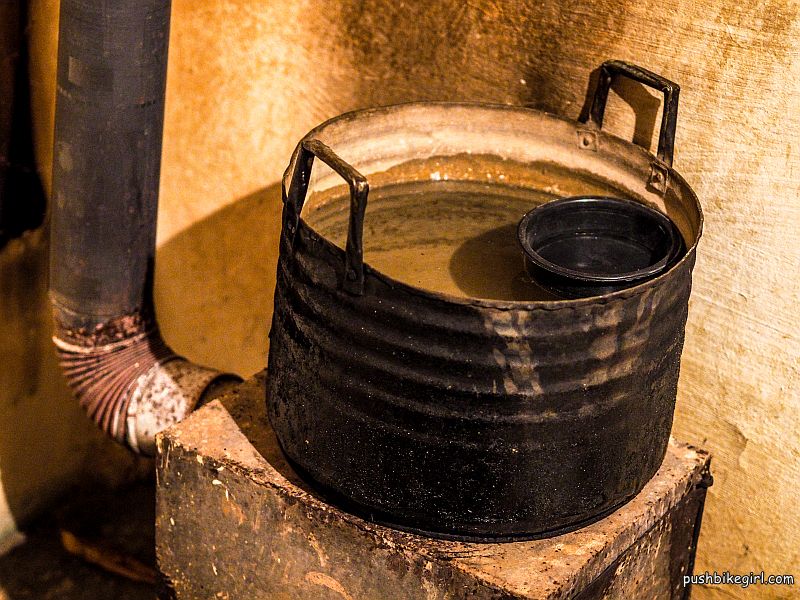
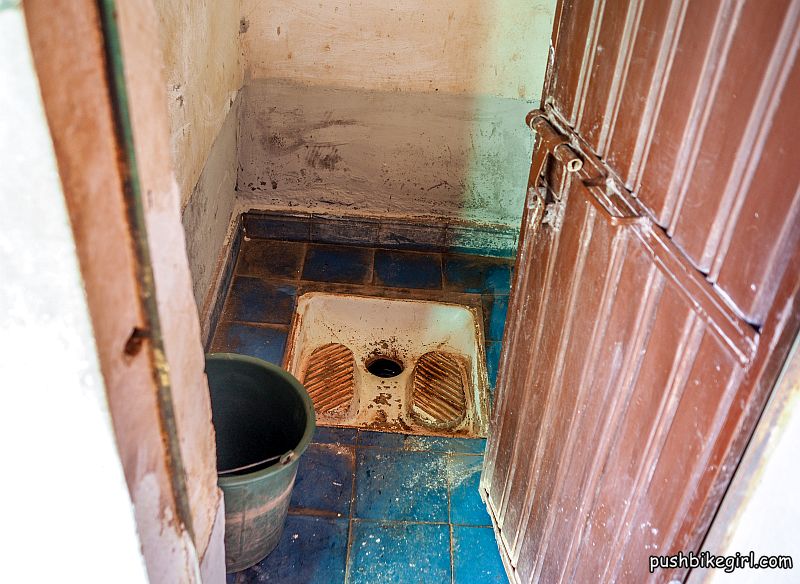
Tea:
You won’t be able to avoid getting your extra portion of sugar every day, because the incredibly sweet tea is part of everyday life.
Therefore, I was waved at many times a day and invited in for a cup of tea and a lovely chat. Bread and olive oil are always served. Better than any butter.
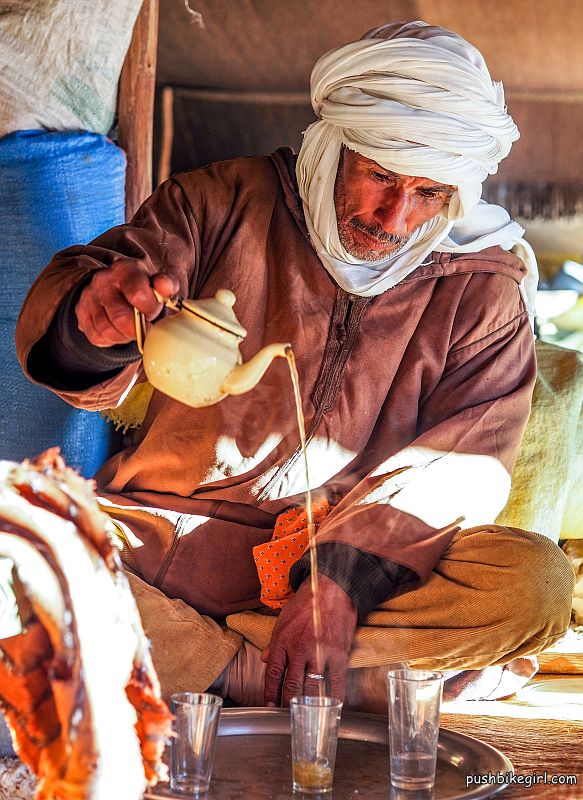
Bike shops:
Even in the smaller towns, I’ve always seen small workshops, where you should be able to get the essentials repaired.
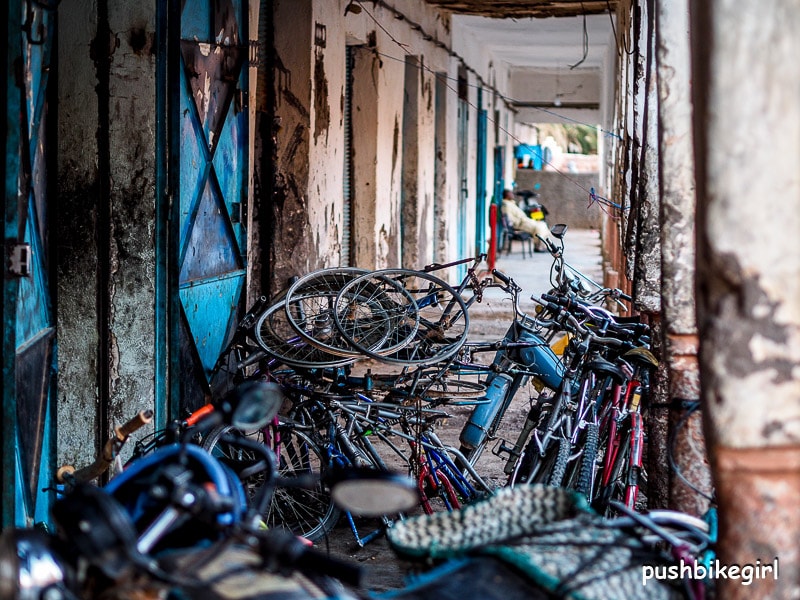
Photography:
The people are not shy and are mostly happy to be photographed. Just ask beforehand.
Money:
ATM are abundantly available. Exchange offices are no problem either.
Children:
The cadeau (gift), lapiz (pen) and candy calls can sometimes be annoying. The closer you get to the tourist areas, the louder and more numerous the calls become.
Some children are also very intense and run after you and may insult you if you don’t give them anything. So please don’t distribute anything, it just makes things worse.
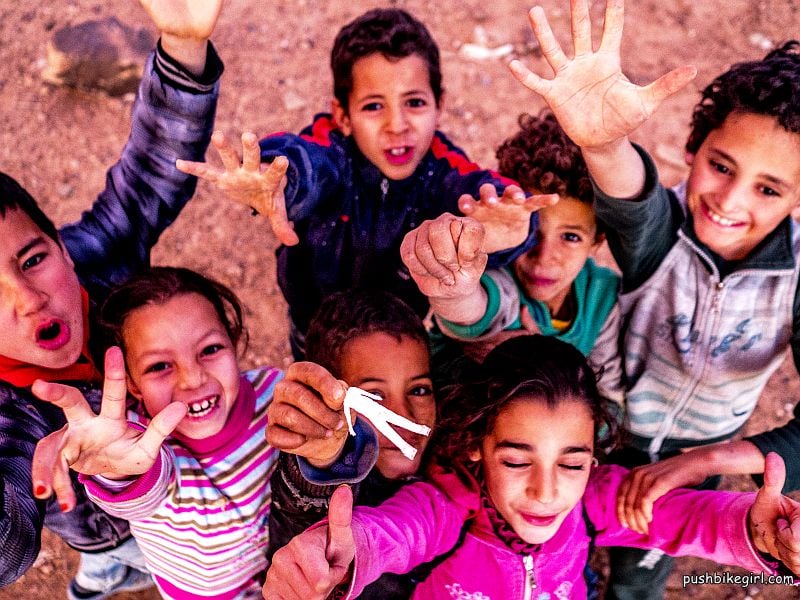
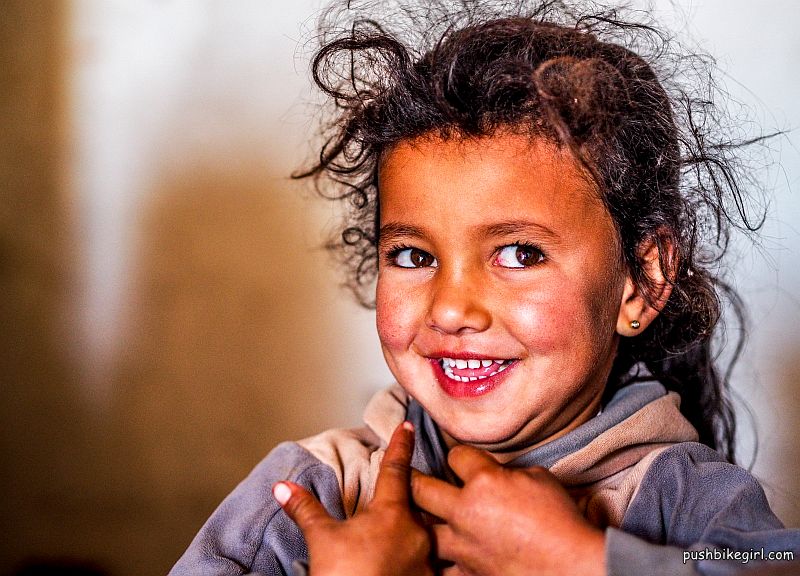
As a woman alone:
As a solo woman I had great encounters with both genders. Muslim culture is extremely hospitable. I was allowed to sit at the table with the men as well as in the kitchen with the women.
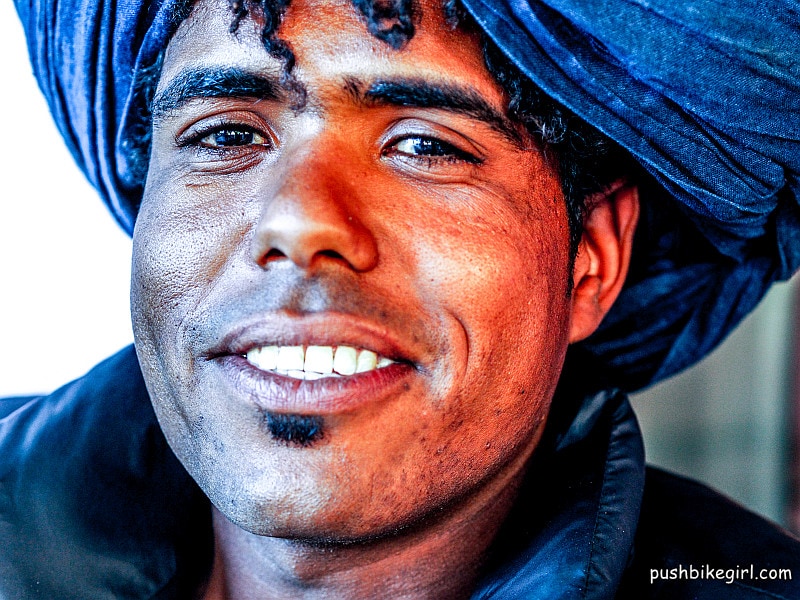
I was allowed to carry their babies around their homes and to explore the village alone with the children. I never had the feeling that someone would not trust me.
I was immediately welcome.
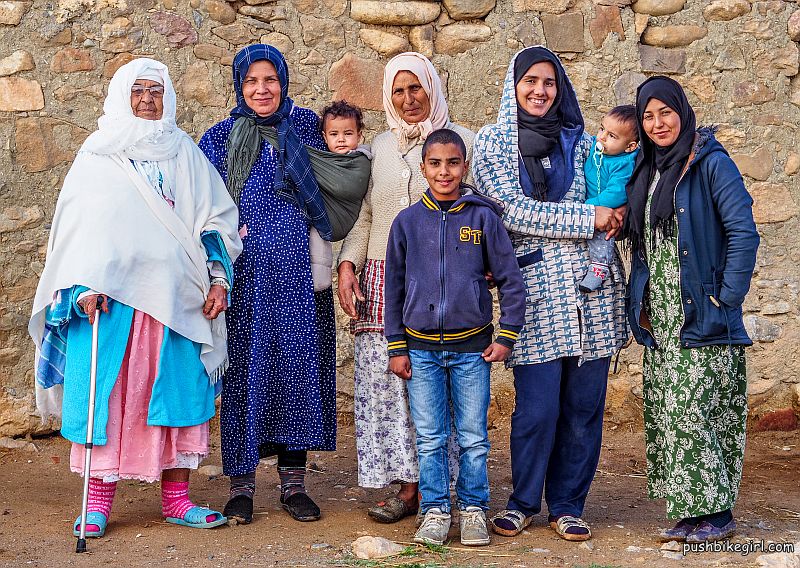
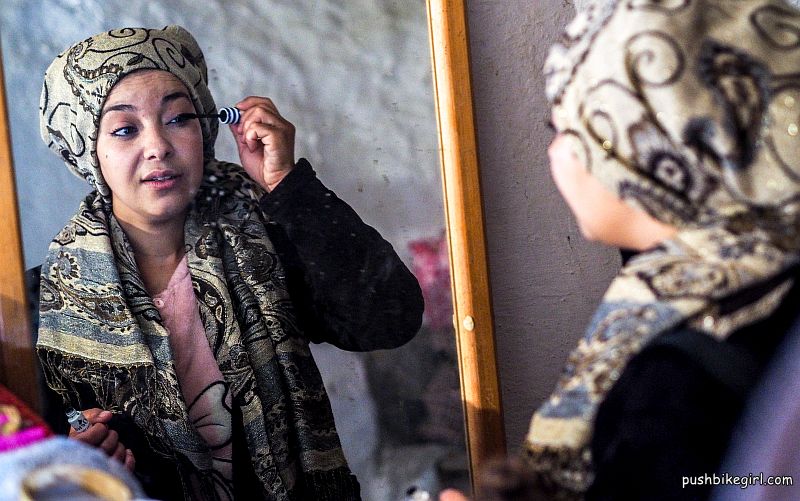
Harassment was very seldom.
But I had to answer the normal questions whether I am married and/or have children several times a day.
With single men I was always married, with families I was sometimes honest, but I weighed up to what extent I told them some white lies to make my life easier.
What annoyed me were the eternal questions whether I would like to marry the men and take them with me to Germany.
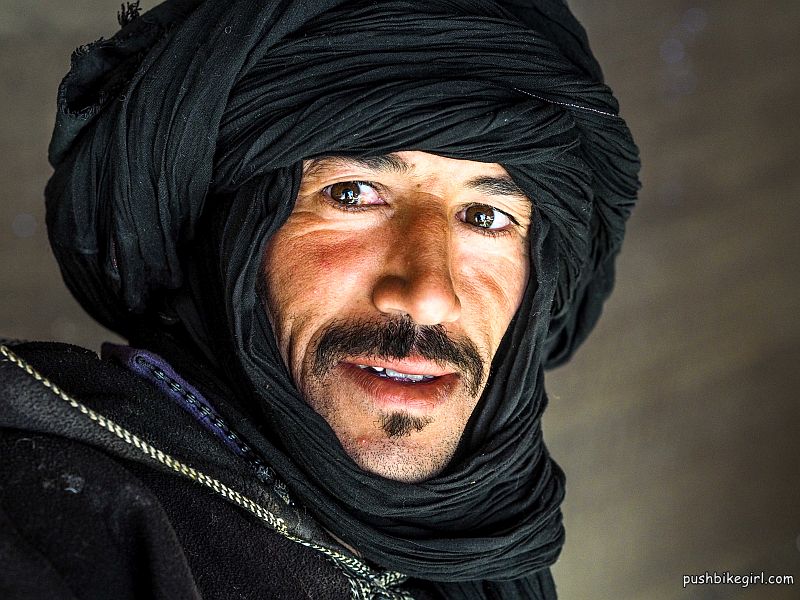
I always dress conservatively when I travel, so Morocco being a Muslim country I of course dressed accordingly. I am convinced that light clothing can get you into trouble.
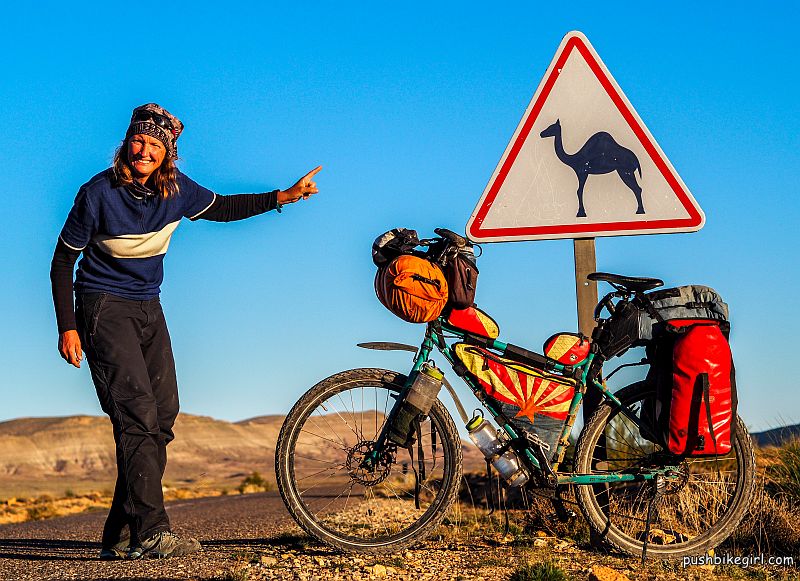
In general, I had no problems. Only once I was a bit insecure when a young motorbike rider followed me in the desert. But at some point, he disappeared again.
Also, when camping wild I had no doubts about my safety and never got in trouble.
Even at night I explored the tiny towns and always felt safe.
Safety:
Even if there was an extremely dramatic incident in the Atlas Mountains in Dec’18, I would like to describe the area where I was as safe.
I never had any difficulties. Of course, there is no guarantee anywhere, but I felt safer in Morocco than in many other countries.
The Muslim world in Morocco has two major advantages. There are only a few guard dogs and people drink little to no alcohol. That makes the country much more relaxed right from the start.
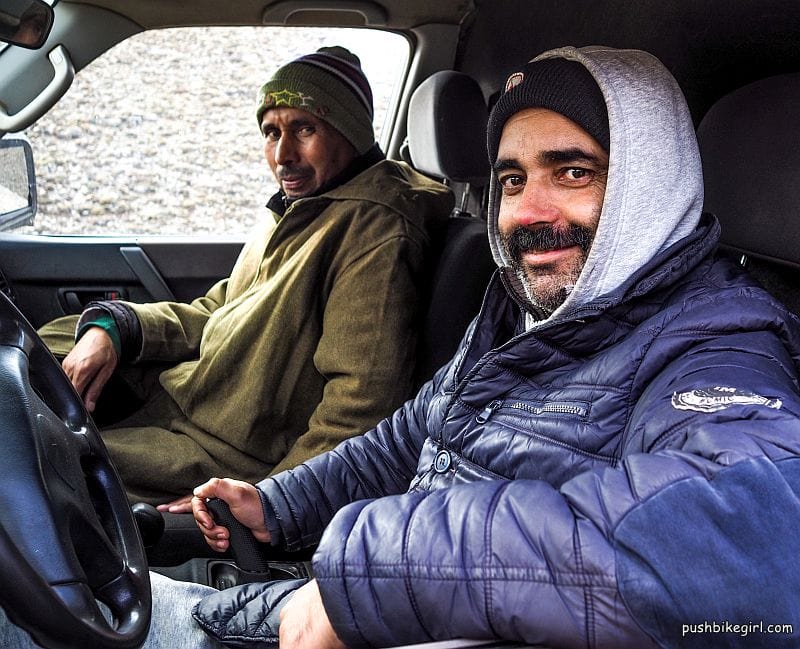
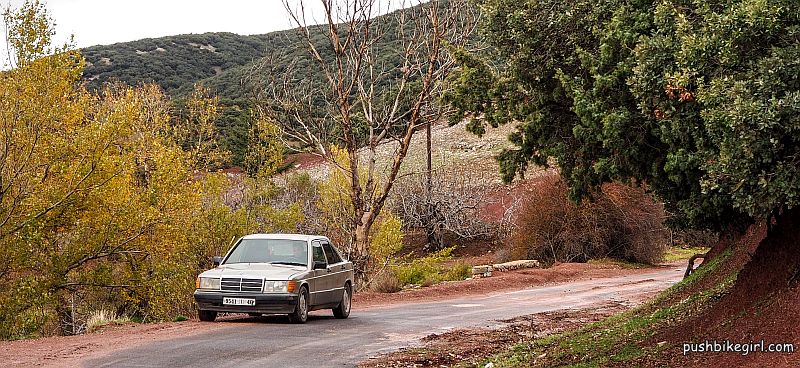
I had police escort in the Rif mountains and Middle Atlas Mountains for 14 days – 24/7. It happened way before the terrorist attack on the two women, so this escort was not the result of their attack.
The police even slept next to my tent in the car. They also checked who I was staying with again and again, talked to my host families and followed me around – unfortunately I could only shake them off when I cycled on trails.
They were always friendly, but often hid from me. But I confronted them a few times and asked them to introduce themselves to me as soon as the team changes.
I even spent the night at a police station once – simply because it was cold, wet and convenient.
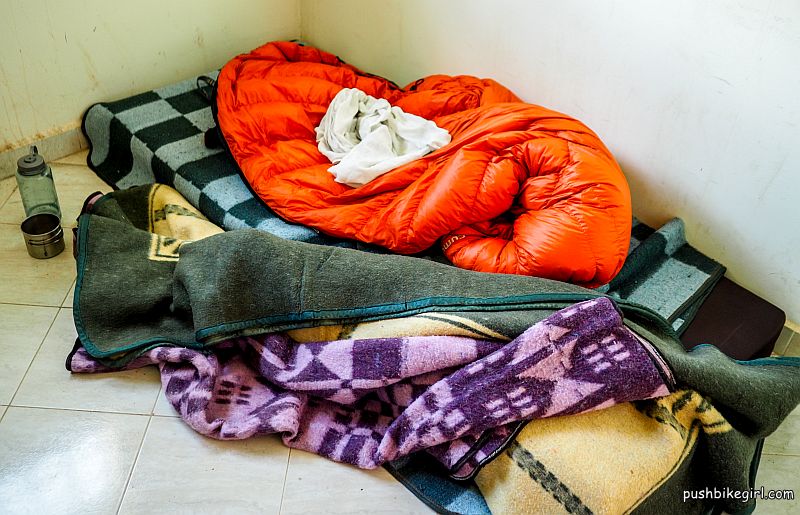
Finally, in Missour, I went to the police and complained about the escort and had my freedom and privacy from then on.
I still don’t know why I ended up with an escort. I know from other cyclists, whether alone or in pairs, men or women, that things were similar for them.
Wild animals:
Unfortunately, I didn’t see any. I don’t think there is any reason to worry about animals.
Internet:
Sim Card from Maroc Telecom. Cheap. I was very surprised how extremely good the coverage was, even in the remote corners of the country I had some good network.
Generally, it is a very fast connection.
Arrival:
The crossing by ferry from Spain/Almeria to Morocco/Melilla was absolutely no problem.
Without advanced booking I slept through the night on the floor in the dining room and entered a new country the next morning.
Visa:
90 days on arrival. No costs for EU member states. Visa extension has become much more difficult since 2019. The easiest way to get it is to cross over the border into the Spanish enclaves for a short time – and reenter with another 90 days.
Interesting villages and larger towns:
As you might know, I always leave the touristic areas aside – haggling and the we would like to rip you off as much as we can attitude annoys me, so I’m drawn to the quieter areas.
Therefore, I liked it most in Foum-Zguid and in Tata. Quiet, colorful places inhabited by Berbers and black Africans. In Tata there can be a lot of hustle and bustle.
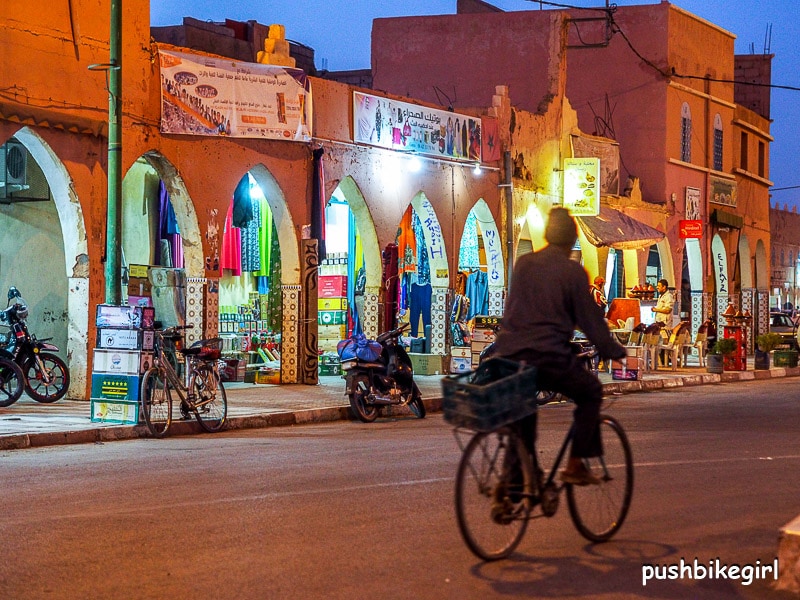
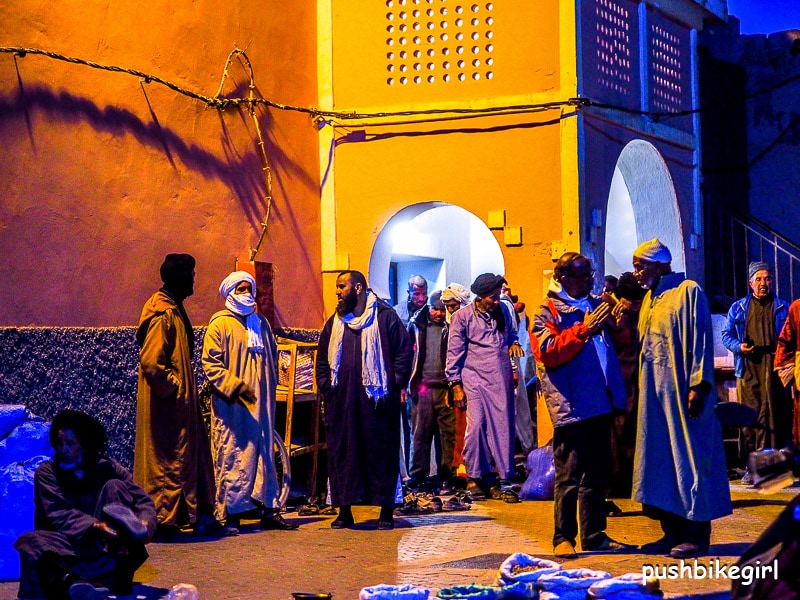
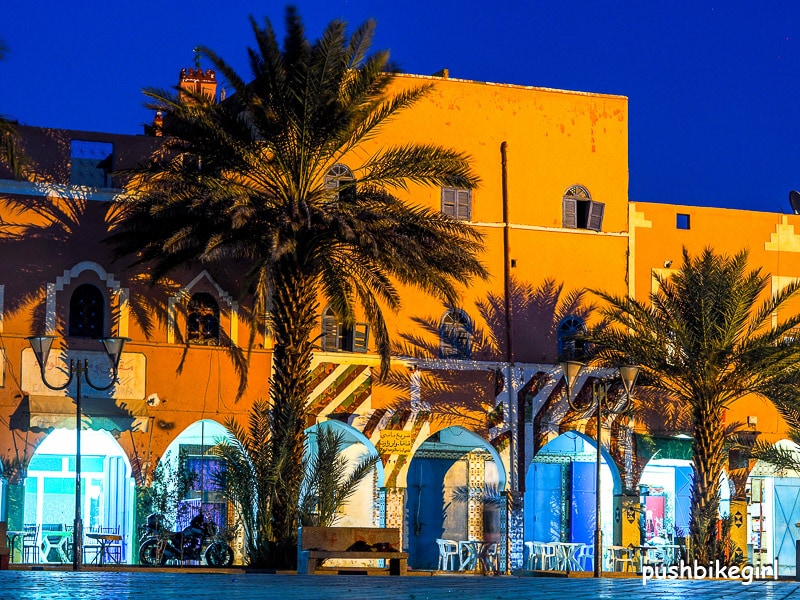
My highlight routes:
1. The route through the mountains in the Middle Atlas from Taza over the Tizi-bou-Zabel pass. In winter cold, wet and foggy. Nevertheless, an experience. Hardly developed for tourism, and sparsely populated throughout.
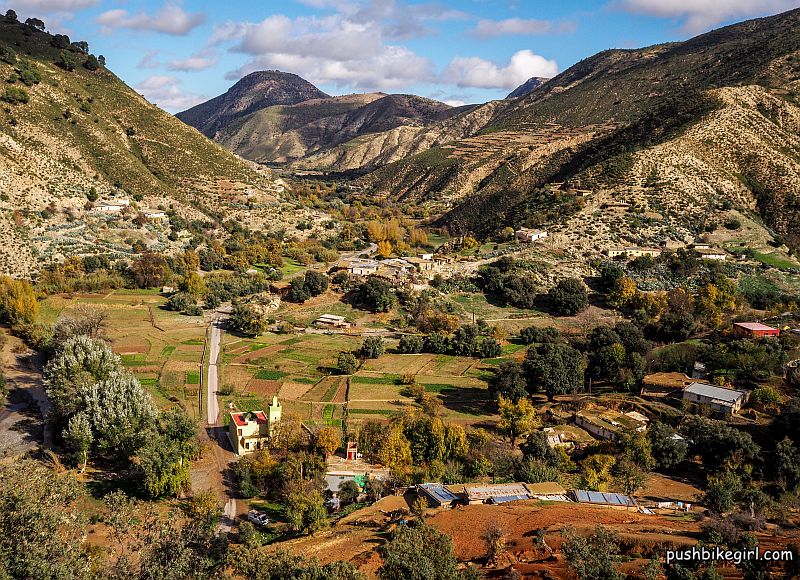
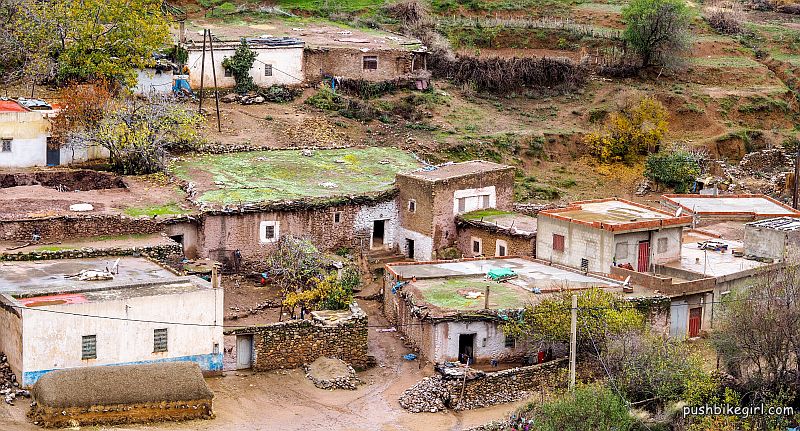
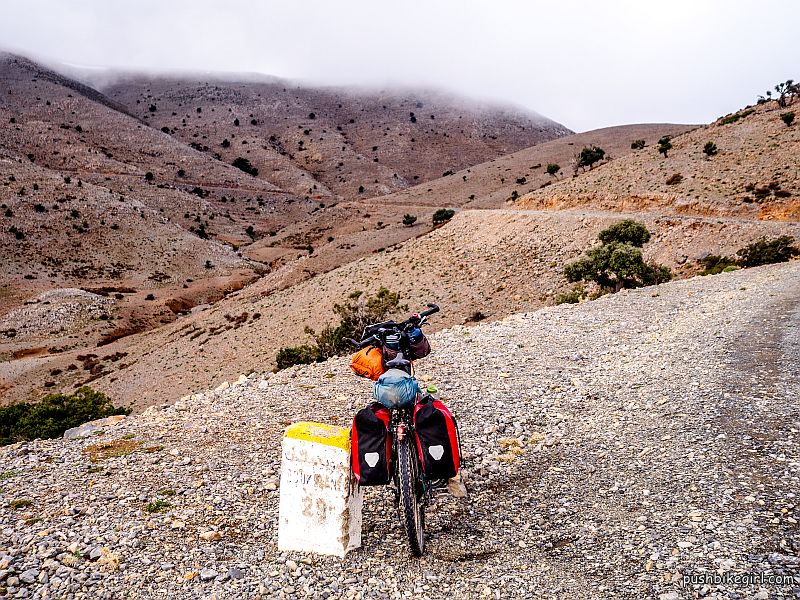
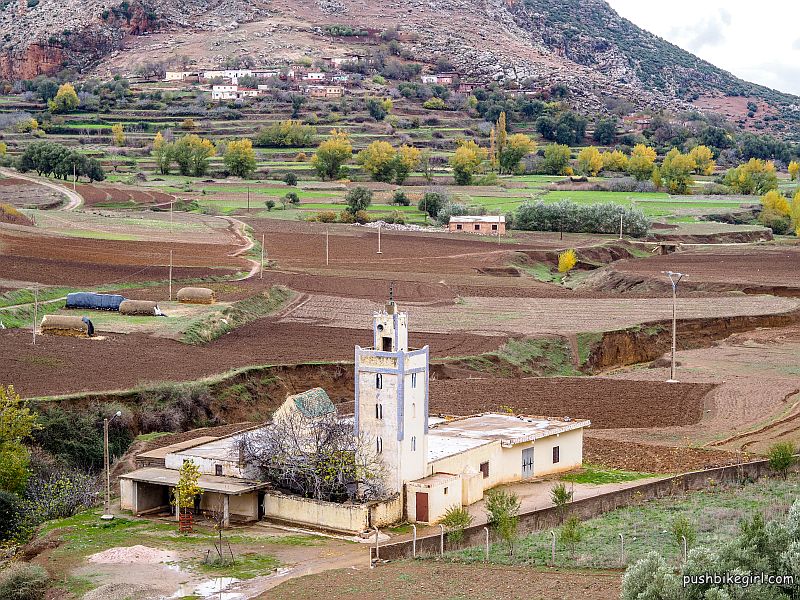
2. Trail from Boudnib to Erfoud. Sandy sections, many camels, almost no humans, if only nomads. Landscape not really exciting, but beautiful desert feeling.
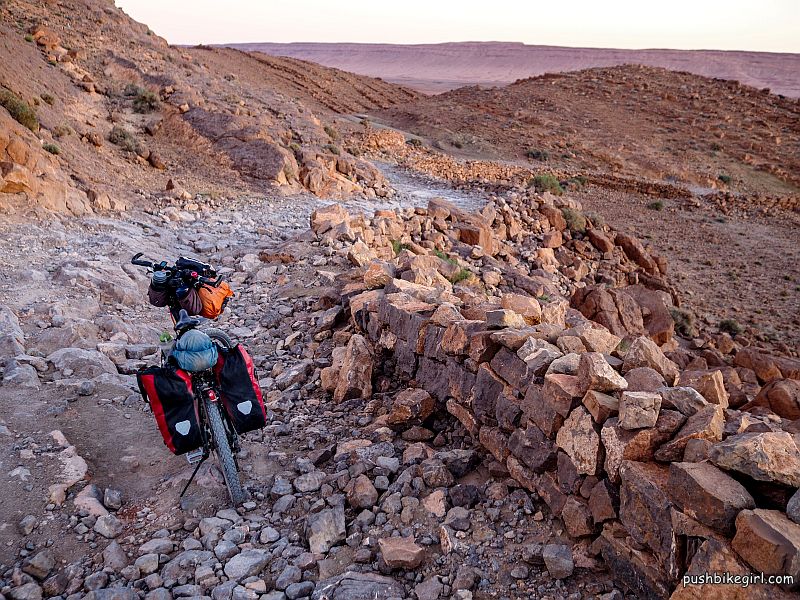
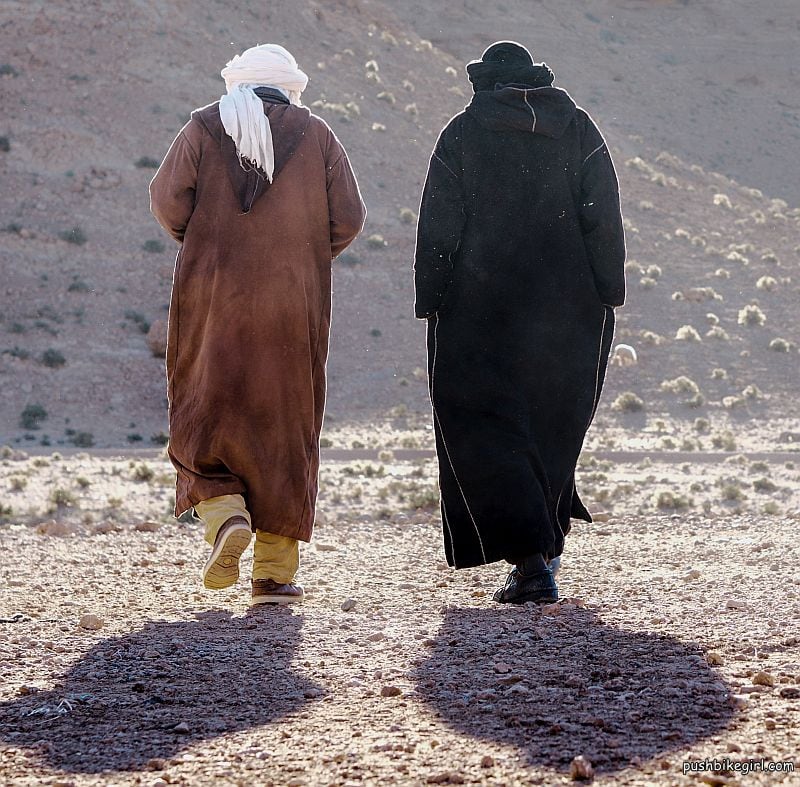
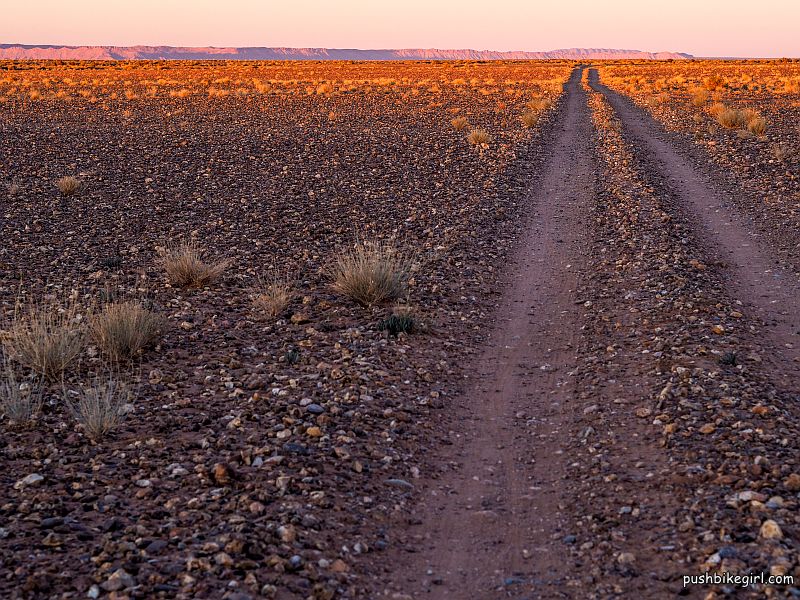
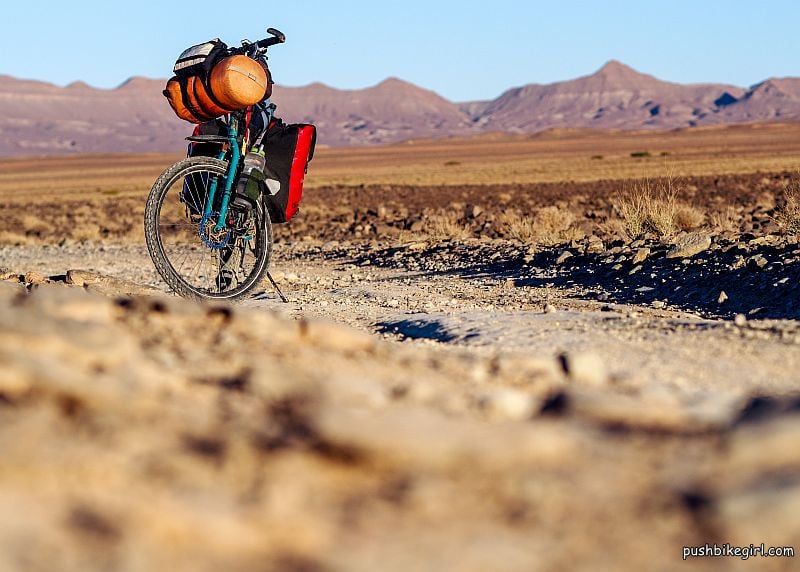
3. Gravel road from Taouz to Oumjrane along the Algerian border. Long sandy roads. Great landscapes. Varied. Many Auberges along the way.
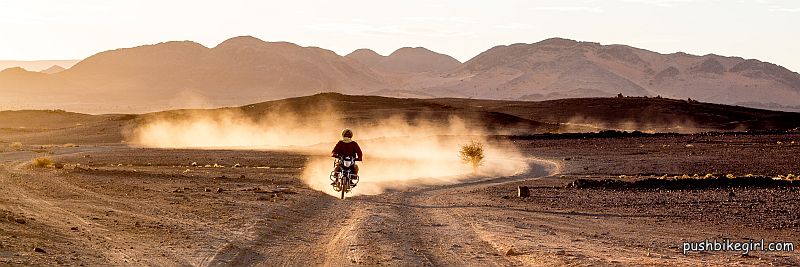
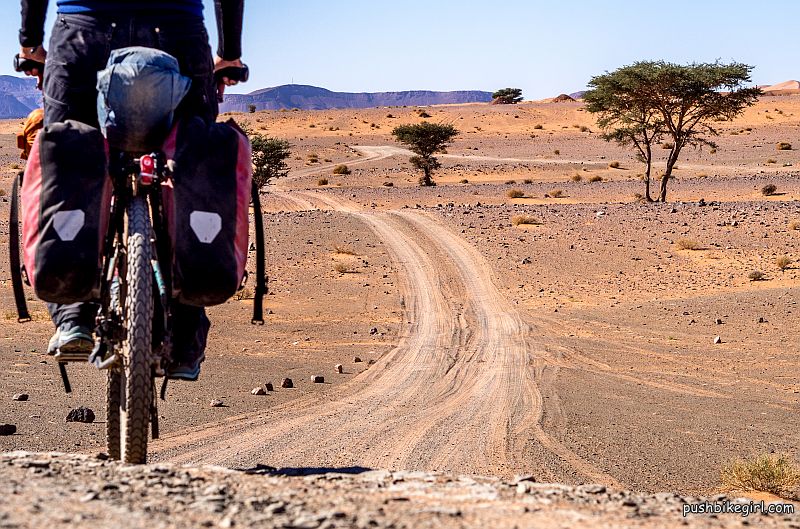
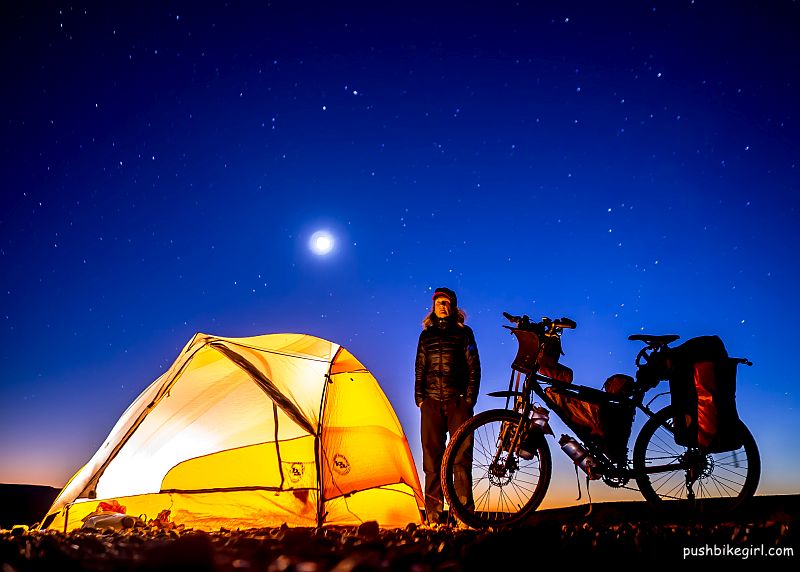
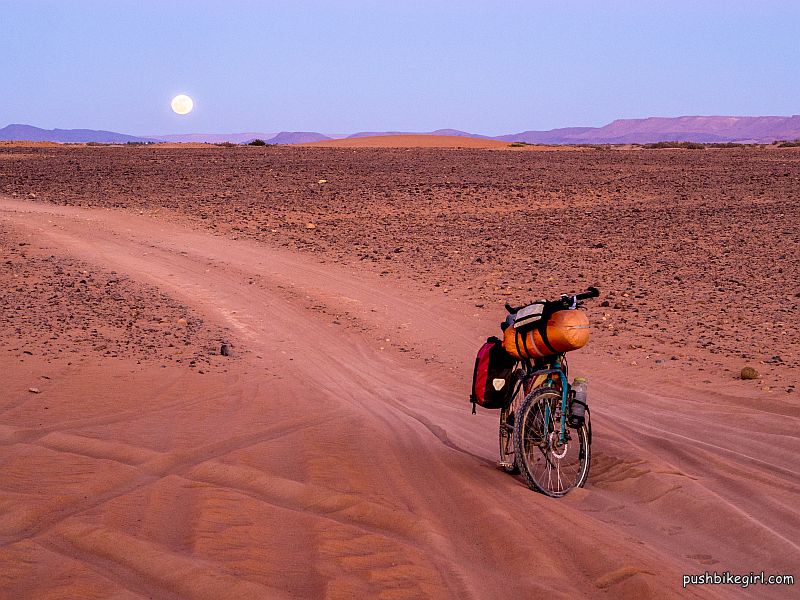
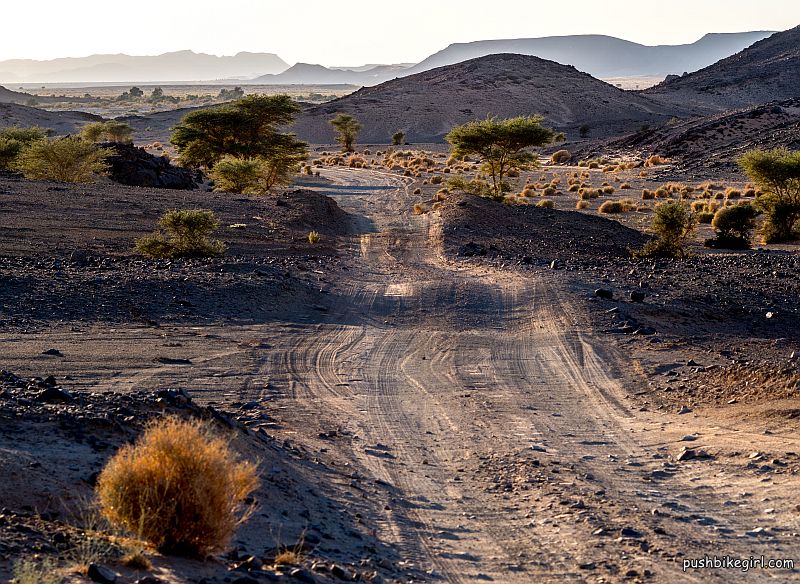
4. Gravel road from N’kob crossing over the Jbel Saghro mountains in a northwestern boomerang shape towards El-Kelâa M’Gouna. Conglomerate rock and varied landscapes. Lonely.
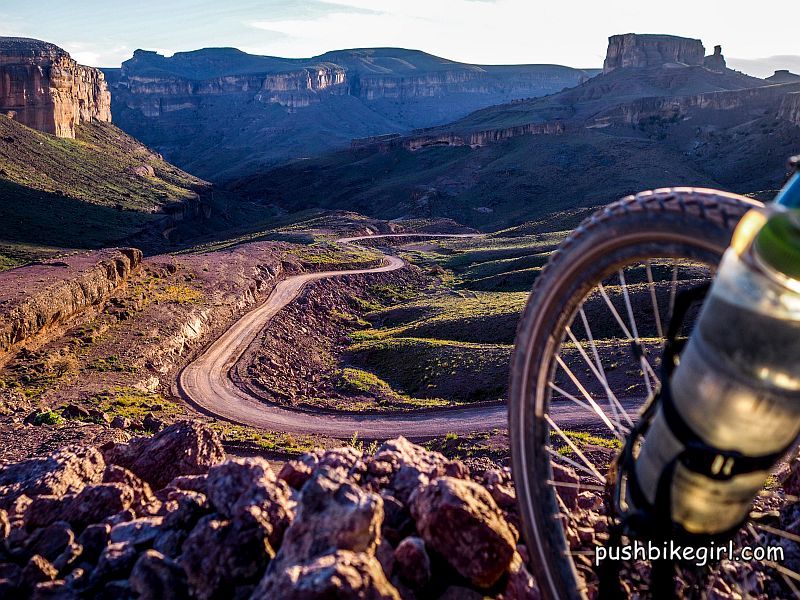
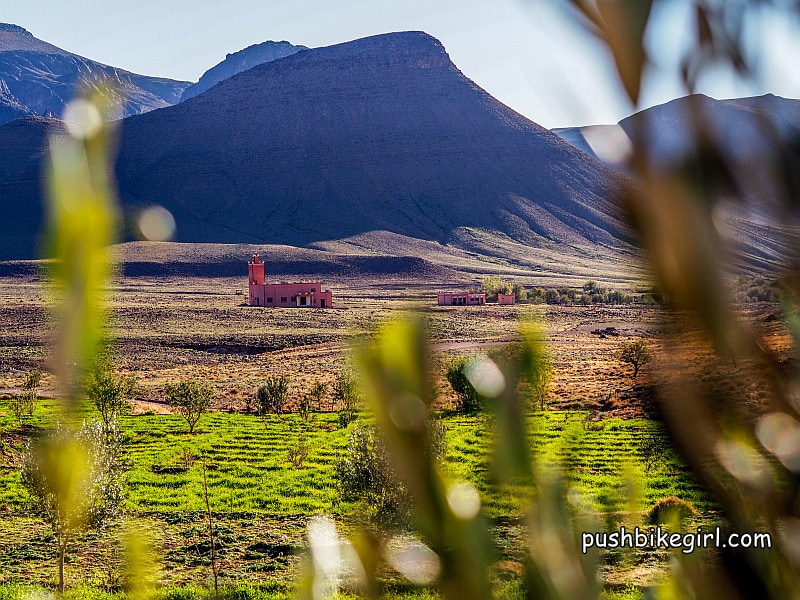
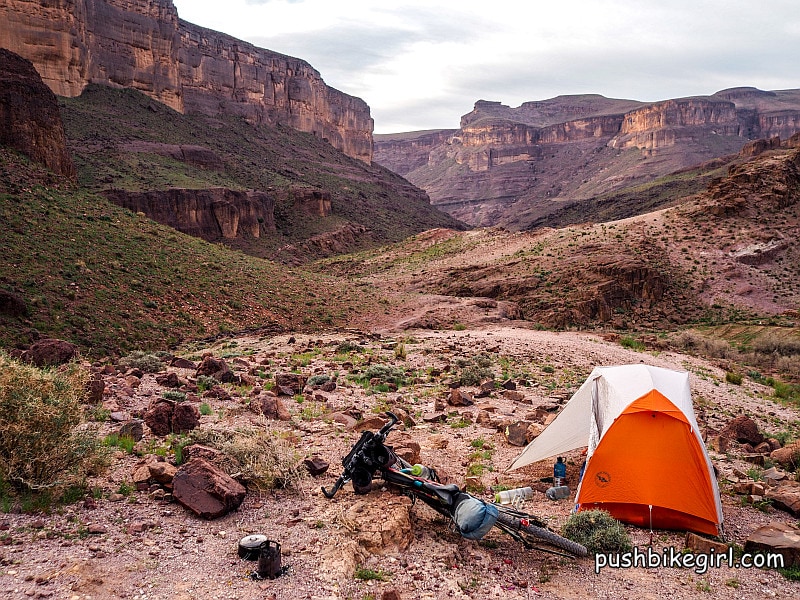
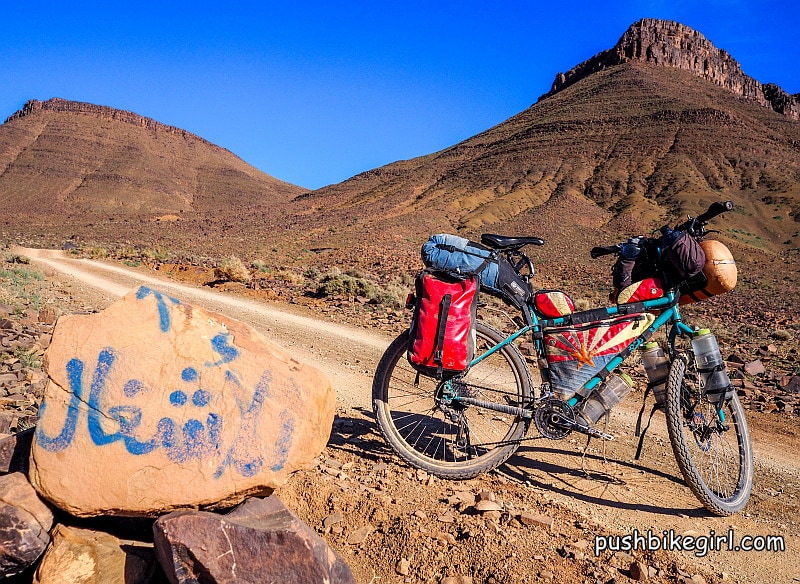
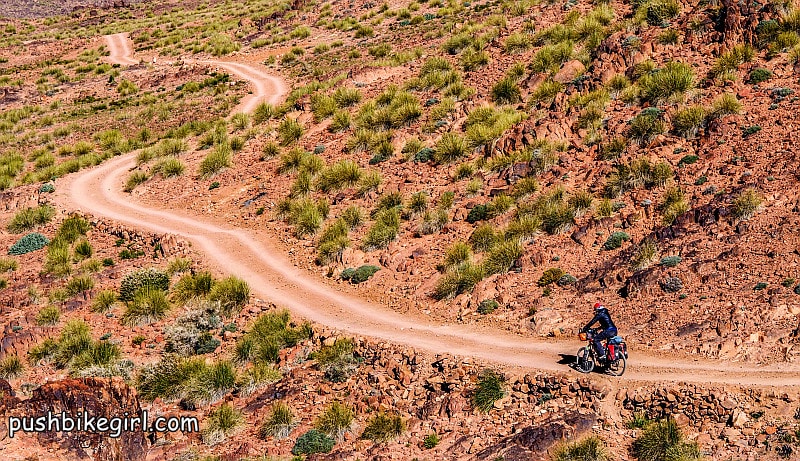
5. Partly tarmac – party gravel road Atlas Mountains Bou Tharar to Imrhrane and towards Dades Gorge. Great landscapes and beautifully situated villages built of clay.
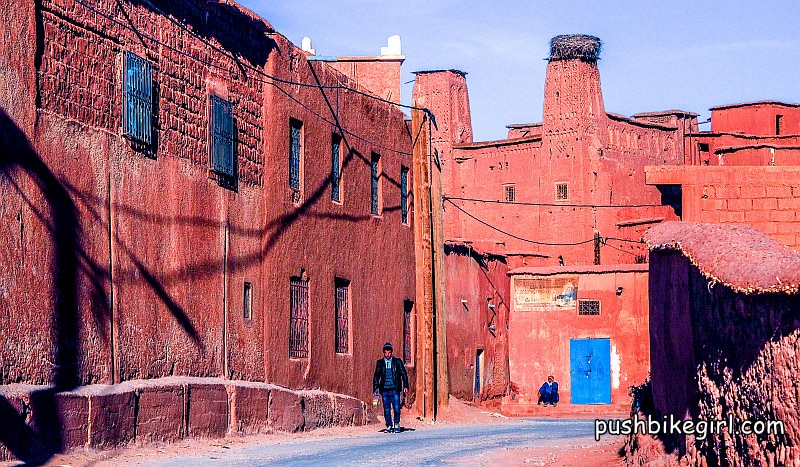
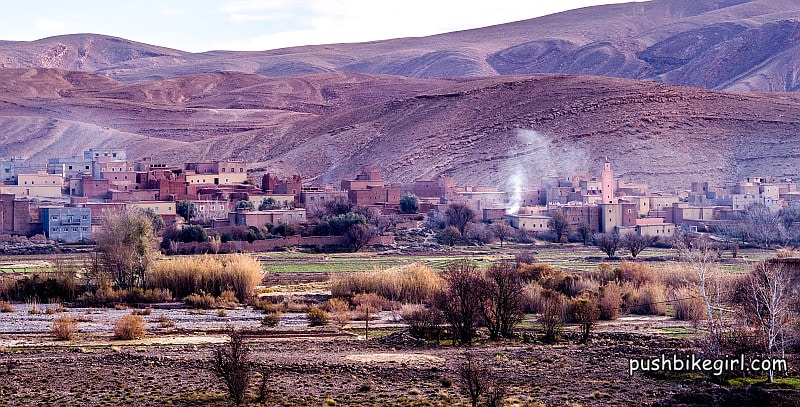
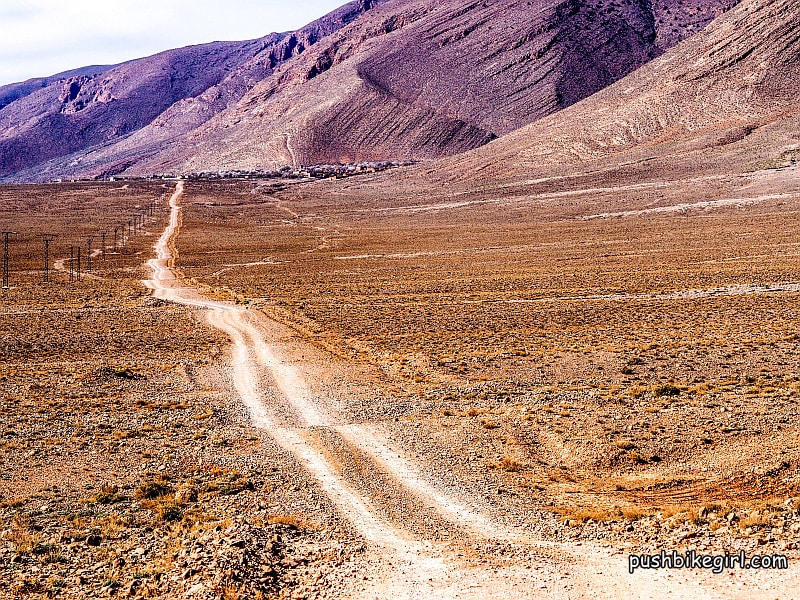
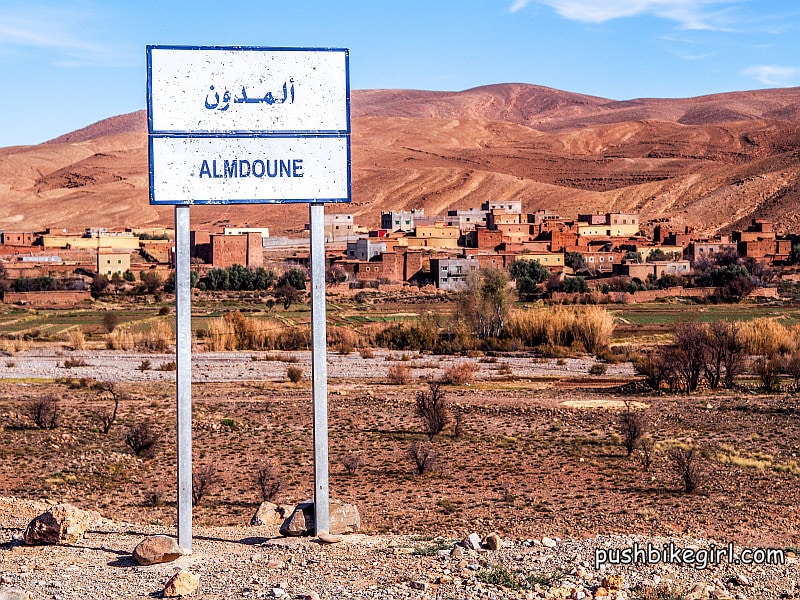
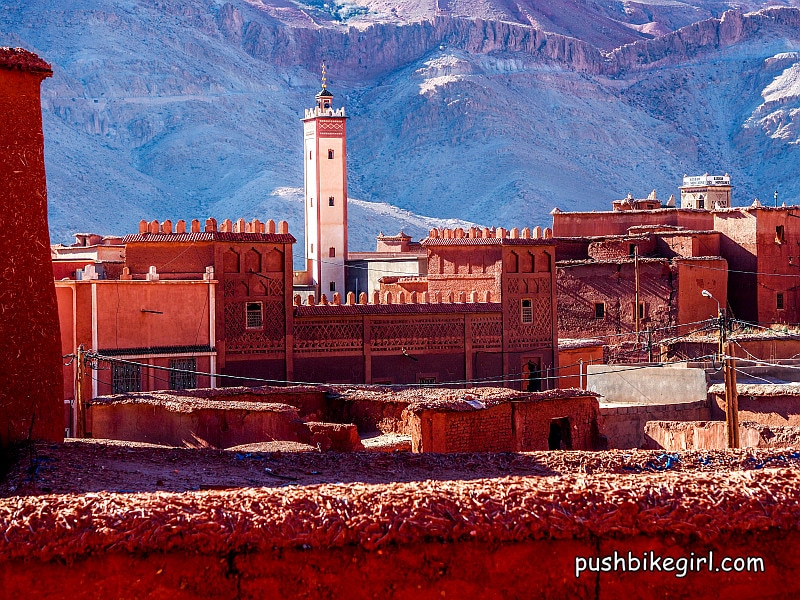
Maps:
I had a Michelin and Reise-Know-How map. I also used the Maps.me app.
If you are using those paper maps watch out for the highlighted roads, nothing can go wrong during this way of planning, because Morocco is really beautiful.
Traffic:
In general. I couldn’t complain about the traffic, but I can’t really judge it, because I avoided all the busy roads.
Hamam:
You should treat yourself to the Moroccan bath. Strictly separated by gender, it is divided into 3 areas that differ in temperature. Hot water is available in buckets. Admission converted it is a few Euro.
Western Sahara:
I had ticked off the extremely boring, windy, sandy and desolate Western Sahara in 14 days. Of course, you can ride it much faster.
Apart from the strong prevailing wind coming from the north or north-east, the route is simply extremely barren and those who don’t want to go to Mauritania can really think of another option – there are much nicer places in the rest of Morocco.
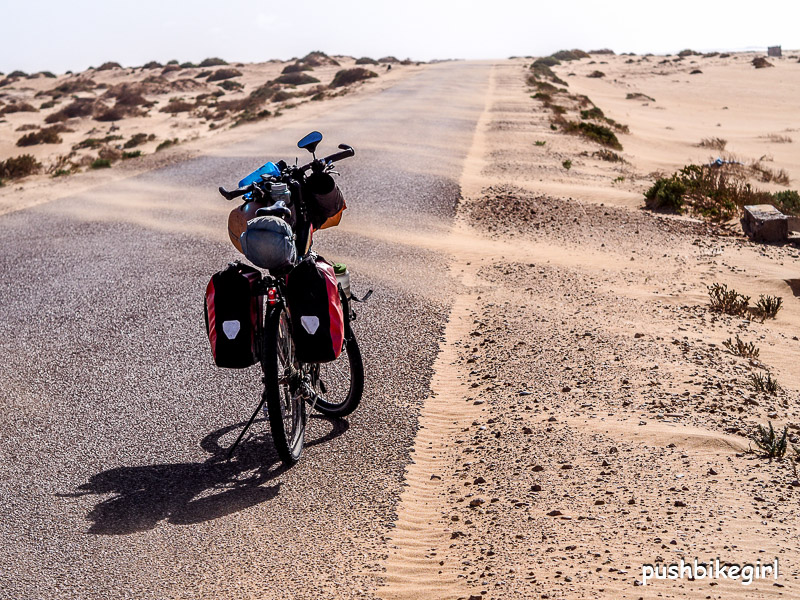
“Windy” is a great app, which I used daily in Western Sahara to avoid the crosswind as much as possible.
It’s amazingly accurate – so I usually didn’t leave until about 3 pm when the wind had finally turned from east to north and cycled for many hours at night with a lovely tailwind.
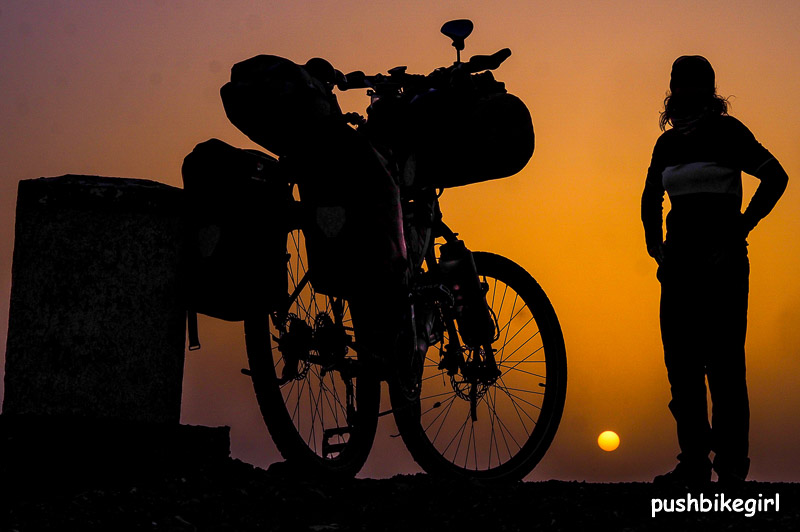
If you carry a few copies of your passport, the numerous police checks will be a bit faster. They’ll keep one at each check point.
I also had two escorts – but not 24/7 like in the north of the country.
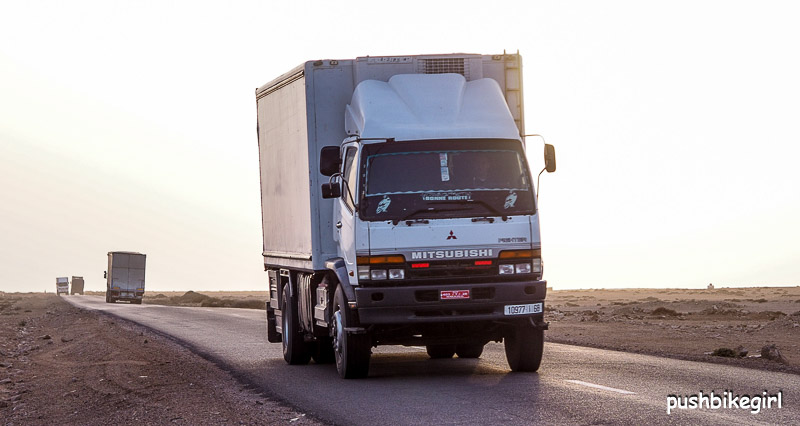
The road from Guelmin to Tan-Tan and on to Laayoune, is heavily loaded with trucks and without shoulders, in parts really scary.
Alternatively, there is a track that avoids the main route from Guelmin to Tan-Tan – I would definitely prefer that one than the main road. After Tan-Tan it is much quieter. From Tarfaya is a quiet alternative road to Laayoune, directly along the sea.
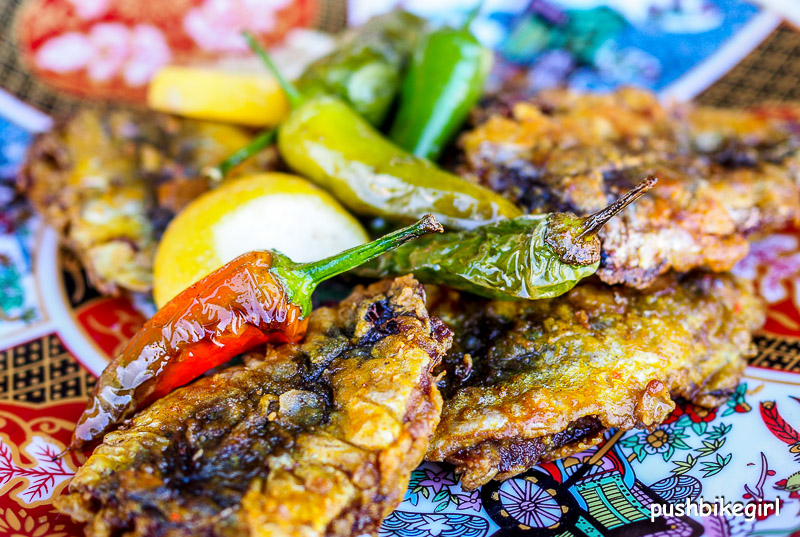
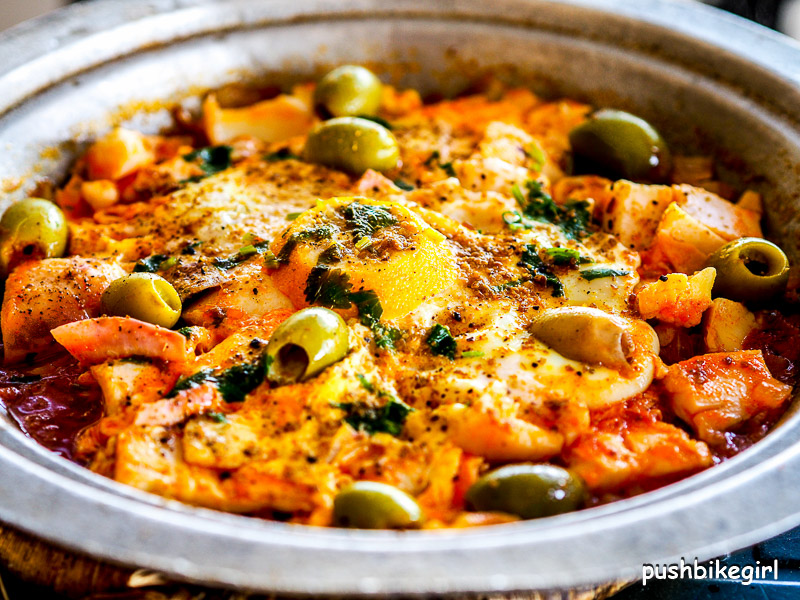
Water and food are not really a problem here either. In trucker pubs, which you can find every 100 KM at the latest, you can restock. Delicious fish can be found often.
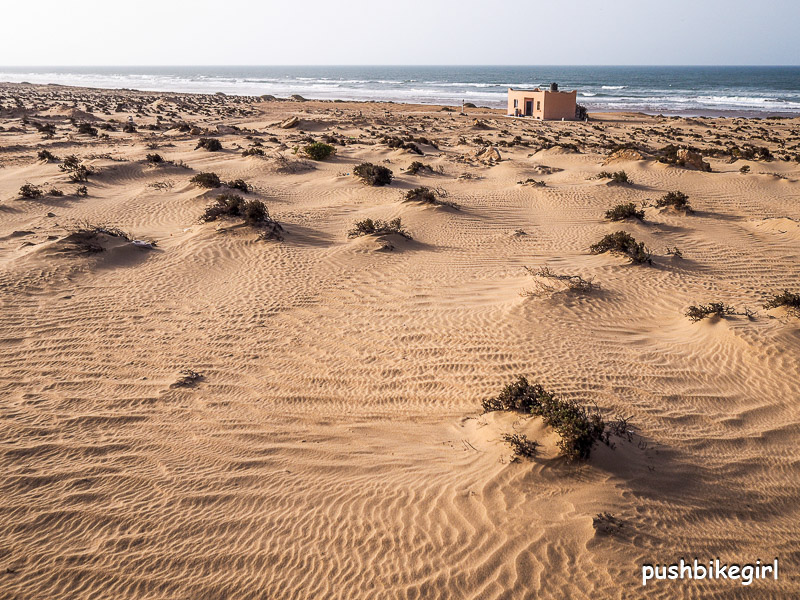
Sandstorms can be a bit tricky. Some smart people came up with the idea of using goggles. I am sure they would be useful – haha
I listened to podcasts to deal with boredom.
Wikivoyage contains a summary of where to find food and water.
Do you have any more questions?
Please write them in the comments below and I will answer them.
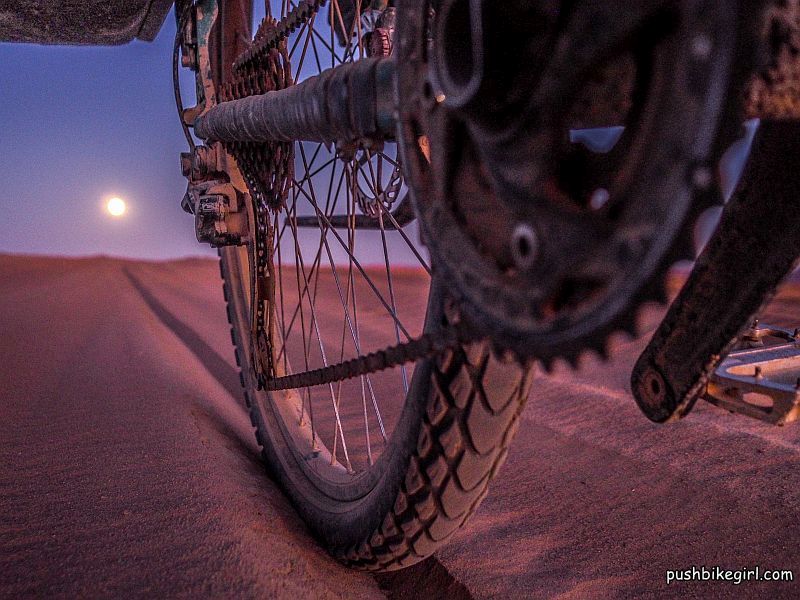
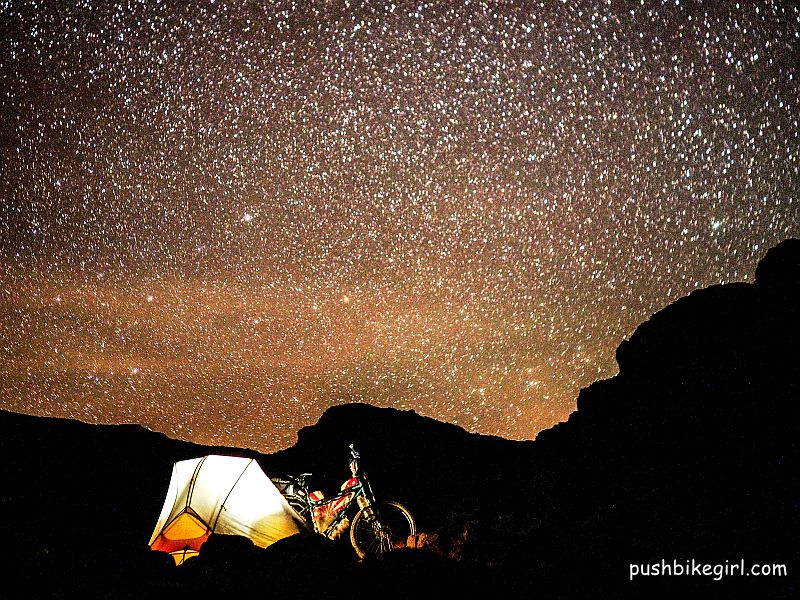
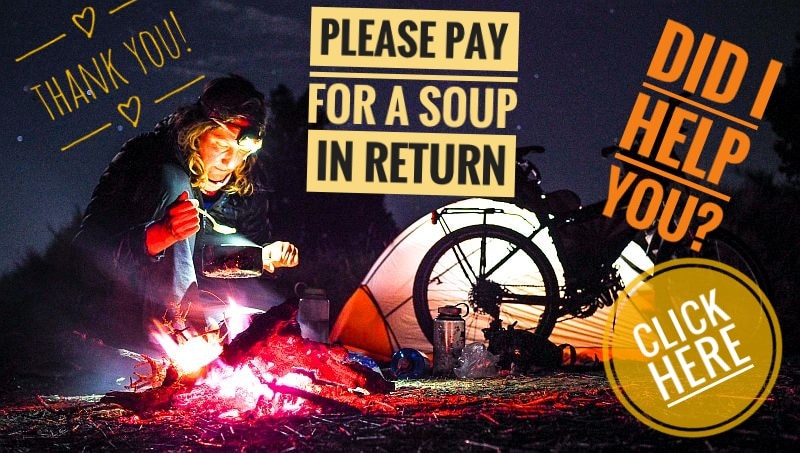
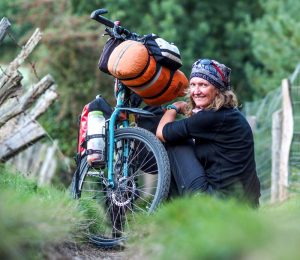
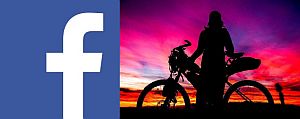
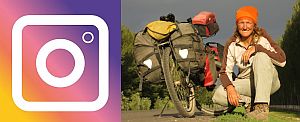
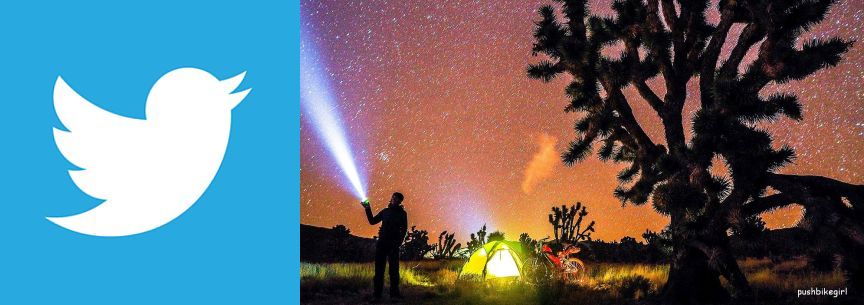

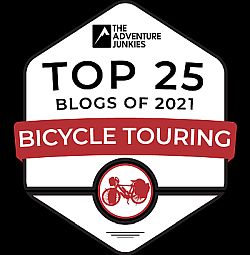
Hello Heike,
I have also been in Morocco from mid april to mid juni 2019. I cycled the route Ceuta, Tetouan, Chefsaouen, Meknes, Rabat, Casablance, Agadir. I think your choice to Not cycle there was the best. Then my experiences in those more populated areas were absolutely the opposite of yours …
All the aspects you are positive about I am negative about. Besides that the culture in the major cities is mainly based on plastic garbage and plastic products (in the medinas). And on sugar, more sugar and only sugar. Friendliness lasts only about 5 minutes, then you will (for sure) be asked for money. There is also very little interesting to see and to do in towns.
I also had some very bad experiences with the securite while wildcamping at remote areas. First I got permission from the owner during the daylight time. Then the securite showed up at midnight (!) to force me to leave the place and to spend the night at a spot they decided upon. That is however all for your own security ofcourse, were it actualy is about there responsability. Once they showed up with 8 people and 4 cars, once with 10 people (including the major) and 5 cars and once they payed (me !) for a hotelroom which I had to take.
All in all after 2 months I decided to leave Morocco for all of this and to return to Europe which I did by taking a longdistance bus back to Tanger. Morocco is for sure not anyone’s friend …
Wilfried
So sorry to hear all this Wilfried!
Thanks for sharing your experiences!
All the best for you!
Heike
Heike, a great summary. I’ve cycled in Morocco the last two years, but only 2 week short trips in the Atlas Mountains. Like you I love the food, the scenery and the people, although the constant selling in Marrakech can be tiring. Taroudant was much nicer. Reading your report and following your blog at the time makes me think i’ll Try the Riff mountains next year, or Oman which I hear is great!
Justin, great to hear you had a good time!
I have been to Oman myself….not sure if you have read my blog entries?
https://pushbikegirl.com/category/blog/oman-de-en/?lang=en
I loved Oman, but I would say Morocco has far more to offer….
Best greetings Heike
Hiya! This is a great resource. I’m not interested in touristy Maroc either. I’m meeting my mother in Marrakech on a certain date, so I’ll have about three weeks to get there, coming from the Nador In a week or so. I might have some time afterward, although money might be tight. I was planning on a route somewhat similar to yours, but maybe you’d advise skipping some of the north and going more south before looping back up to Marrakech? What do you think?
Thanks Jonathan,
I liked the north. Less touristic. But it is a long way from Marrakesh if you only have 3 weeks I would stick to the High Atlas and the desert close to the Afghan border.
It gets cold in winter.
Cheers Heike
Loved your adventure and the pictures are amazing!! Keep safe and happy travels! Can’t wait for the next posting. You are an amazing woman!!
Love your great comment 🙂
Thank you…best greetings Heike
Just found your blog, I’ve been binge-reading it for hours! I’d recently been suggested Morocco and was looking at planning a short tour over the Christmas period this year. Around work, I can only really manage 3 weeks- do you think this is too short amount of time to tour the country? The mountains and desert landscape appeal to me the most, but they’re the furthest from airports to get too and was worried I might end up rushing too much!
Hi Matt…thanks for the great compliment!
3 weeks is okay I guess! Take a bus from the airport and get dropped off where you would like to start riding…saves time and avoids the busy and dangerous roads.
Enjoy
Amazing information, thanks so much for sharing. I want to do the Mediterranean coast and then head south, may do it from october! I go on a travel bike and I prefer roads, but I would try some of the routes you suggested. Thanks!!
Enjoy Carlos – hope Morocco will be open….
Best greetings Heike
Hi Heike, thanks for all the information. I’m planning bikepacking Morocco for a month during December/January, I was considering going from north Tangier – Rabat – Casablanca – Marrakesh – Agadir.. but then I read the Wilfred comment about coast route and how different it is. Would you recommend to go this route or should I keep more inland and maybe go from Melilla – Taza – Khenifra – Marrakech – Agadir?
Thank you
Adam
Hi Adam, stay away from the coast. Morocco is beautiful almost everywhere, but the coast is busy and very different.
Best greetings Heike
Hello, Heike, thanks for a lot of useful details. I want to ride in Sep. 2022 with my bicycle along the algerian border Merzouga – Ouzine – Ramlia – Sidi Ali – Oumjrane – Zagora. My questions to you are:
1. how much soft sand is on the road?
2. Will I need to push the bicycle most time?
3. Water sources available?
Thank you in advance.
Hallo Sergey,
There are sections with a lot of sand, but doable! You can ride more than you have to push. Yes there is water because nomads are living there and there Are also permanent houses now and then.
Good luck
What an intrepid cycle tourer you are! I loved your blog and your pictures (and thus the content : ) are amazing!
I have one concern about touring Morocco: the stray dogs. I noticed in researching it that it came up quite often. I ask because while I generally don’t worry about humans, I really don’t like having my legs nipped at -or worse- by snarling dogs, especially when there’s more than one. I loved bike touring the Balkan but would occasionally have this issue, and have to very visibly hold a rock in my hand and threaten them, etc.
Your dog experiences in Morocco? Anywhere that it’s particularly bad, or not an issue?
Thanks! Donald Clark
Hi Donald, sorry for the late reply.
I know the fear of stray dogs very well, fortunately I had no isuues in Morocco.
Enjoy the country, it’s awesome.
Best greetings from Chile
Hello!!
Thanks for this amazing resource! I will be travelling to Morocco in a month and am hesitating whether i should take my bike with me. I have never bikepacked more than 2 weeks, never alone, and only rarely in remote areas.
If I were to travel by bike, I’d love to be travelling very light, no tents and just a sleeping bag, no food equipment and just buying food for 1-2 days each time, and eating on the go.
I was wondering if that is realistic, or if there are regions that are too remote for this.
thanks for your help!
Hi Brieuc,
sorry for the late reply.
Well there are remote areas, but most places are reachable within a day or two.
In my experiences you can easily survive without a stove.
Happy traveling
Hi Heike
I’m Simo from moroccoroamer.com, I am exploring the web to reading about travelers’s experiences in our Morocco, then found your post(this one), I enjoyed it while reading. I’m happy for you and your safe journey, Keep in mind that with your experience you inspire a lot of tourists to come here to Morocco, thank you
have a good time
and stay safe
Hi Simo,
thank you – I loved your country very much.
All the best for you, Heike
Thank you, Heike for such a vivid and detailed description of your travels through Morocco. Inspiring! Beautiful pictures, too.
I am off to Morocco for a couple of weeks this spring and your recommendations have been very helpful to prepare.
Hi Matt – hope you had a great time!
Best greetings Heike
Thank you for your blog and beautiful pictures…
I am thinking to go to Marocco…but with an electric cargo bicycle and my question would be If is enough places where I can charge the batteries. I noticed that you wrote that at least on every 100 Km you can get water and food in truck stops…so probably they have electricity there too. In other case I can take a bicycle trailer and solar panel…thank you and wish you a safe trip and maybe will see you someday somewhere!
Hi, sorry, I can’t help. I don’t know your route. People = electricity. No people no electricity.
Best greetings Heike